We’ve come to the 9th and final day of my day trips to Sussex to find tiny ancient churches. I certainly saved the best until last as these little churches blew me away with their beauty - in the centre of a village, in the middle of a field, hidden down a farm track, on the top of a hill ……… Two of them actually moved me to tears (the first church, St Michael, Up Marden and last church, Coombes church with no known dedication).
Have you read my blog posts for the previous eight day trips to Sussex churches? If not, click on the links below:
Day 1 - churches in Warminghurst, Botolph, Glynde and West Firle
Day 2 - churches in North Stoke, South Stoke, Bramber, Alfriston, Bishopstone, Alciston
Day 3 - churches in Bodiam, Ewhurst Green, Brightling, Lullington and Rodmell
Day 4 - this day trip took me across the border into Kent and included a visit to the gardens of Great Dixter; churches in Goudhurst, Rolvenden and Fairfield (on Romney Marsh)
Day 5 - churches in Compton (Surrey), Trotton, Chithurst, North Marden, East Marden, Hardham, Rudgwick (Sussex)
Day 6 - churches in Pevensey, Folkington, Wilmington, Litlington, West Dean, Piddinghoe
Day 7 - churches in Shere, Albury (Surrey); Little Somborne, Kings Somborne, Upper Farringdon and Selborne (Hampshire)
Day 8 - churches in Coates, Sutton, Bignor, Barlavington, East Lavington, Burton Park, Selham and Tillington
This final day involved a lot more driving than usual because I discovered another church in the Mardens that I should have visited on Day 5 but somehow it wasn’t on my radar. It was in the opposite direction to all the others I had planned for this 9th and final day trip - a 90 minute drive from London and then a 45 minute drive from there to the second church. However it was worth it as it was one of the most memorable churches and one that moved me to tears. I also factored in a last lunch at my favourite pub, The Ram Inn, in the village of Firle, a regular haunt of mine.
Finding St Michael’s church in the tiny hamlet of Up Marden church was a real battle. It’s barely a hamlet, more a handful of houses and farm buildings scattered over several miles of farmland. The views as I drove along the crest of a hill were spectacular.
The sat nav couldn’t find it either! It’s actually off the road down a farm track and hidden by a belt of trees. It sits on the edge of a field with far reaching countryside views. I didn’t even find the path to the church instead I fought my way through undergrowth and trees and suddenly came to a clearing where this beautiful little church stood. The setting is utterly sublime and I was quite emotional walking around and even more so when I entered the church.
The church is late C12 or early C13 and is almost unchanged from the day it was built. Four decades ago when the church was threatened with closure, a group of local people formed a charitable trust which carried out some very careful restoration revealing very rare C13 wall paintings hidden beneath centuries of dirt and grime.
The graveyard around the church is exquisite with glimpses of the sweeping countryside views between the lush foliage.
The church interior is a simple two-celled building with a narrow nave and chancel, separated by a narrow triangular arch. This narrow arch could be mistaken for Saxon work but it is actually an emergency repair in the C16 (the original C13 arch is immediately above the triangular opening). Don’t you love those blue candlebras? I have no idea if they have been recently painted because the colour is so vibrant.
On the north wall facing the south door is a large wall painting of St Christopher carrying the Christ child.
To the west are further paintings taking up much of the space between the ceiling and the north door, though these are more faded.
There is a simple chalice font, on a modern base, several interesting wall monuments and an original C13 piscina with what looks like a painted consecration cross beside it.
It was a long 45 minute drive to the second church, St Mary’s in the village of West Chiltington which is a Grade I listed C12 church described as a "showpiece" and "the most attractive part" of the Wealden village. It retains many features of historical and architectural interest.
The nave and chancel are probably C11 and possibly pre-Conquest. Around 1200 the south aisle and in the late C13 the south chapel were added. There is a squint allowing the congregation in the south chapel to be able to see the eucharist.
The church was decorated for harvest festival a week earlier so full of beautiful floral arrangements.
The church boasts some spectacular wall paintings ranging from late C12 to C17.
A half hour drive took me to St John The Baptist, Clayton, a small C11 church with a squat bell turret of shingles with a wrought iron weather vane dated 1781. Clayton is a small village at the foot of the South Downs, about six miles from Brighton. I didn’t know until later that Sir Norman Hartnell who designed Queen Elizabeth II’s wedding gown and coronation dress and was also couturier to Elizabeth II and the Queen Mother, is buried in the churchyard.
The church has a magnificent chancel arch. The chancel was altered in the C13 and in 1838.
The early C12 wall-paintings are of international importance. They were found in 1893 and are the finest of those known as the Lewes Group of churches. They have been much discussed over the years and the majority view is that they are likely to date from 1100 at the earliest.
They are executed in true fresco i.e. painted on wet plaster and centre on a figure of Christ in Judgment, seated in a mandorla (almond shape) above the chancel arch, supported by an angel on each side, beyond each of whom are six Apostles. The latter appear to be in conversation with each other. Lower down under a band of elaborate ornament, Christ gives the keys to St Peter on the north side and the book to St Paul to the south.
The next church I visited, St Martin’s in Westmeston, wasn’t on my list. I had planned to visit St Margaret’s in Ditchling but it was lunchtime and there was no parking anywhere nearby. Also, it was in a large village so too busy for me (my interest is little churches in obscure villages and hamlets).
This church has a long, sparsely populated parish running north from the Downs, with a few houses and the church by a crossroads. The partially rendered flint nave of the church was originally aisleless and a simple, round-headed north doorway shows it is early C12. About 1500 a south chapel was added to the chancel which was built with a lean-to roof that continues that of the aisle. The porch is beautiful and has a 450 year old brick base and parts of the timbering are 600 years old (apologies I didn’t take a photo of the porch). The small bell turret has three bells, two of which were cast in 1636.
The font is Norman and is unusual as it’s made in the form of a cup from chalk clunch (only one other chalk font exists).
The pulpit is Jacobean and made of oak. The nave is Norman and the chancel added in C13. The chapel was built in C15 and is now the vestry and houses the organ. From the west door you can see that the chancel is “skewed” relative to the axis of the nave. This was common practice in English churches and is thought to be an attempt to align the later building to face Jerusalem rather than due east which was the custom of earlier church builders.
A 20 minute drive took me to St Andrew, Beddingham. The present village of Beddingham comprises groups of houses south of the church and along the re-aligned A27 road, a stone’s throw away. Virginia Woolf spent holidays and weekends during 1912–19 at Asham House nearby. The house was then surrounded by the cement works that opened in 1932 and became derelict and sadly the Grade II listed house was demolished in 1994 to allow expansion of Beddingham landfill site.
The church is near Glynde Reach, a navigable arm of the Ouse in the Middle Ages and probably marks the former centre of the village which was a modest port. It was a minster church with a college of priests in the C9 though after the Conquest it was purely parochial and belonged to Wilmington priory. The church is surrounded by farmland and stunning views across the Sussex countryside.
The church is made of flint with ashlar dressings and some flint chequerwork on the tower. Ashlar is a type of masonry formed by using finely dressed stones of same size, shape and texture laid together in cement or lime mortar of equal size joints at right angles to each other. Built into the exterior walls of the tower and the south nave aisle are many carved stones from local Lewes Priory.
The building of the west tower is well documented. Five wills, dated from 1540 to 1558/59 reveal first an intention to build and then the progress of construction. The material is flint and stone chequerwork, with much re-used stone. The start date suggests that Lewes priory, then being dismantled after the Dissolution, was the source. The present tower is heavy and plain with diagonal buttresses.
The nave is not older than C12 and the high proportions result from the addition of a clerestory (high section of wall with windows above eye level) in the C14. Though apparently all C14, the chancel is relatively short for that time and may retain its C12 proportions.
The arcades (a row of arches on columns) of C12 differ from each other markedly, though each has three bays and pointed heads.
The church was remodelled in the mid-C14.
By now it was lunch time and it was only a four minute drive to my favourite village and pub, The Ram Inn in Firle. I had to have one last lunch there before I left for Sydney and of course a wander around the village with a last visit to the graves of Vanessa Bell and Duncan Grant in the church graveyard (Vanessa’s son Quentin Bell is also buried there). I’m a Bloomsbury Group fanatic hence why I’m drawn to this village. Vanessa’s sister Virginia Woolf and her husband Leonard lived in a house on The Street in Firle for a short time. Before heading to the village I decided to drive up to Firle Beacon above the village. It was a gloriously sunny day so the views were at their best. From the top of the hill you have a 360 degree view - to the English channel on one side to the South Downs on the other.
It was a quick lunch this time, not my usual leisurely Ram Inn experience, as there were still four churches to visit. I had a ridiculously ambitious agenda this trip (12 churches) and three churches fell by the wayside mainly due to lack of parking nearby as they were in busy areas - Ditchling (as I mentioned above), Preston Park (a busy park in Brighton) and Plumpton (engulfed by the East Sussex Agricultural College).
16 minutes from Firle is St Nicholas, Iford. I’ve driven past the turning to Iford on many occasions on my way to visit Monks House which was the home of Virginia and Leonard Woolf in the village of Rodmell. Together with Charleston House they are my two favourite houses and gardens.
Iford village lies by the water-meadows of the river Ouse. This is the river where Virigina Woolf tragically took her own life by filling her pockets with stones (the river lies beyond the bottom of the garden of Monks House). Unlike other such meadows in the area, the land between the river Ouse and the start of the Downs is wide enough for the village of Iford to be on the same level.
The church was founded in 1090 and retains much of its Norman character. It has the least altered axial tower plan in East Sussex. The detail of the tower is mid-C12 with a small round-headed bell.
The date of the removal of the aisle is not known, though a plain square-headed window shown in the blocking of one arch may suggest it was after the Reformation. The font was retooled in C13 with a round bulging bowl, similar to those at Rottingdean and Cuckfield in West Sussex. It has a thick central stem and four corner shafts with capitals carved into the underside of the bowl.
The countryside was glorious on the way to the next church, St Peter’s Southease, only a five minute drive away.
Southease in East Sussex is located in the Ouse Valley, roughly midway between the towns of Lewes, and the port of Newhaven. It is nestled in an idyllic setting in the South Downs National Park. The church is on the village green surrounded by some stunningly beautiful old houses. At the time of the Doomsday Book there was a thriving community and the village appears to have been the biggest herring fishery in the district. The fishery has long gone but a vibrant community of only 50 remains and there are regular events taking place in the village throughout the year.
The church is in a beautiful setting set on a mound overlooking the village green and the water meadows of the River Ouse beyond.
The church has one of only three round towers in Sussex (the other two are Piddinghoe and Lewes - St Michael) all of which are located in the Ouse Valley and built in the first half of C12.
The side of the tower set against the nave is flat which indicates that it was added later. It has an irregular conical spire and is hard to date as the only complete external opening is a brick one, low down, which is probably C18. The church looks oddly domestic, with a slightly lower hipped roof at the east end, which dates from the removal of the chancel. It is thought to be C11.
The present church consists of a nave but the original chancel and aisles have been lost. Excavations revealing the foundations of a porticus ( a small room usually an extension to the north and south sides of a church giving the building a cruciform plan), a feature more common in the Saxon era, indicate that the nave is probably early C11.
The plastered walls above the timber chancel arch are decorated with late C17 paintings, sadly incomplete. The traditional reddish brown colours used blend well with the much earlier murals on the north and west walls of the nave.
The three-light C14 east window over the altar has C19 glass depicting the Good Shepherd. A square headed early C15 window, with two ogee (s shaped curve) headed lancets, is built into the blocked arch which originally led from the nave to the pre Conquest south aisle/transept.
The original chancel and aisles/transepts were removed, probably in the mid C14 at the time of the Black Death. To the left of the late 18th century organ is a Norman window (shown in the gallery below).
The square font has attached round corner shafts. It dates, probably, from the 12th century, but has subsequently been restored.
By now it was already 4.30pm and I still had two more churches to visit. The next church, St Mary Sompting, was a 20 minute drive west along the A27 and it was rush hour so the traffic was horrendous. I struggled to find this church as it’s not in the village of Sompting. Then I saw it’s unusual and imposing tower on the hill on the other side of the busy A27 road. It stands on the south slope of the Downs on open ground and is prone to burglaries so sadly it was locked. A church is mentioned in Domesday Book and it has been generally assumed that the tower and part of the nave belong to this.
The tower and Rhenish helm spire were long seen as a major example of pre-Conquest work, but recent research suggests at least the upper part is late C11. The nave and possibly the chancel are essentially C11 and transepts were added in the C12. Most windows are C14 and C15. There is much early carving.
By now it was 5pm and I was worried I wouldn’t make it to the final church before it was locked. Thankfully it was only a ten minute drive away.
Coombes is the quintessence of a small Sussex downland church. It has no dedication so it just known as the church at Coombes Farm. It stands on a hillside above the Adur river. It’s at the end of a short farm lane flanked by a handful of pretty houses, then farm buildings on your right and a sloping field on your left by which I parked my car (see third image below). You can see the church at the top of the slope.
I was unsure how to reach the church so ended up climbing over a gate (image below) but then realised that next to it is a narrow opening which one is supposed to use (hardly wheelchair friendly). The only house around is the one in the image below.
As I walked up the slope to the church the sun was starting to sink below the hill behind the little church. I squeezed through another similar narrow opening into the graveyard and followed the grassy path up to the church. As with all the other churches I have visited, there was absolutely no sign of life. Turning around, the views over the valley were spectacular with the late sun shining on the hills beyond. It is the most magical spot of any church I have seen and at sundown it was even more beautiful.
I was stunned by the beauty of the surroundings and views but even more so when I walked into this exquisite little church. Until 1949 it was little known, but the discovery of the wall-paintings made it an object of international interest, for they are related to those at Clayton (that I visited earlier in the day) and elsewhere, collectively known as the ‘Lewes Group‘.
The nave is C11 but was shortened in the C18; the chancel was rebuilt in the early C14. The windows range between the C13 and the C16.
The church’s wall paintings are from around 1100 depicting the gospel story of the birth of Jesus. These are rare survivals from the time when our churches were richly decorated and taught the Gospel to those who could not read, through pictures.
The Church bell is dated 1100 or even earlier and is possibly the oldest in Sussex. It is believed to have been made in Normandy. The graveyard is beautiful and the views exquisite.
When I was inside the church a dog scared the living daylights out of me, swiftly followed by an elderly gentleman. He introduced himself as the owner of the gorgeous old house down the slope from the church. He opens and closes the church each day and informed me they have to lock it as they have been burgled once when a piece of the church’s furniture was stolen. I mean, for goodness sake, this church is miles from anywhere, up a dead end farm lane, through a narrow opening, across a field up a slope, through another narrow opening and up a grassy path through the graveyard to get to the front door!! And I’m sure the piece of furniture had little or no commercial value.
I could have stayed at this church for hours but the light was fading fast. I reluctantly walked down the grassy slope past the church notice board and through the narrow opening which divides the graveyard from the field.
It was nearly 6pm and time to head home. I always try to take scenic routes rather than main roads on the way home, mainly due to a reluctance to leave Sussex. This was a particularly poignant end as it was the last of my nine day trips to Sussex and within three weeks I would be leaving the UK for a new life in Sydney.
Leaving Coombes Farm the road took me along a hill with panoramic views.
As the road descended into the valley I realised where I was, near one of my favourite churches that I visited on my first day trip, St Botolph in Botolph so it seemed fitting to revisit it on my last day. The light was fading fast and the church was locked but you can read about it and see images of the inside in my blog post of Churches Day 1.
The church is a Grade I listed flint constructed Saxon church situated in the valley of the River Adur on a slight rise. It serves the rural hamlet (too small to be labelled a village) of Botolphs, near Bramber. It’s hard to imagine that 700 years ago this church was at the heart of a bustling port and crossing place of the river Adur.
The church is one of the oldest I visited and dates from about 950 AD. Its Saxon construction can be seen in the south wall and chancel arch. The slender tower is C13 even though it looks Saxon.
Sadly that was the end of my day trips to Sussex. On a couple of the trips I did venture over the border into Hampshire, Surrey and even Kent to visit one or two churches. You can read about each day trip on the links at the beginning of this blog post.
In each church I have signed the visitors book so if you ever visit, take a look in the visitors book and you might see my name and comment. In fact a friend of mine happened to be in one of the churches last August and was nosing through the visitors book and saw my name. He sent me a text and asked if it was me and couldn’t believe it was. I always have a good nosey in a visitors book, don’t you?!
I have such wonderful memories and nostalgia for Sussex, a county which I adore. When I look at the photos of these churches, they make me realise how much I miss England. I was lucky enough to see them on gloriously sunny English summer days and as we all know, English weather isn’t often as sunny. My heart is split between my sons here in Sydney and my love of England. However family is more important than places isn’t it?
I do hope you have enjoyed following my nine day trips to find these little gems of churches. Who knows, I might go back one day and do another day or two looking for more churches. My criteria are always that they have to be small, remote and very old churches so with one or two exceptions I have avoided any in busy towns or villages.
If you decide to follow in my footsteps and visit some of these churches, these are my top ten favourites for exterior and interior beauty - seven in Sussex, two in Hampshire and one in Kent. Clicking on each one takes you to the relevant blog post except three I saw on this last day about which you will already have read above:
Warminghurst (West Sussex) - Church of the Holy Sepulchre
North Stoke (West Sussex) - Church of St Mary the Virgin
Up Marden (West Sussex) - St Michael (9th day - this blog post)
Coombes (West Sussex) - undedicated just called Coombes church (9th day - this blog post)
Chithurst (West Sussex) - St Mary
Lullington (East Sussex) - Church of the Good Shepherd
Southease (East Sussex) - St Peter (9th day - this blog post)
Fairfield (Kent) - St Thomas à Becket
Little Somborne (Hampshire) - All Saints
Kings Somborne (Hampshire) - St Mary

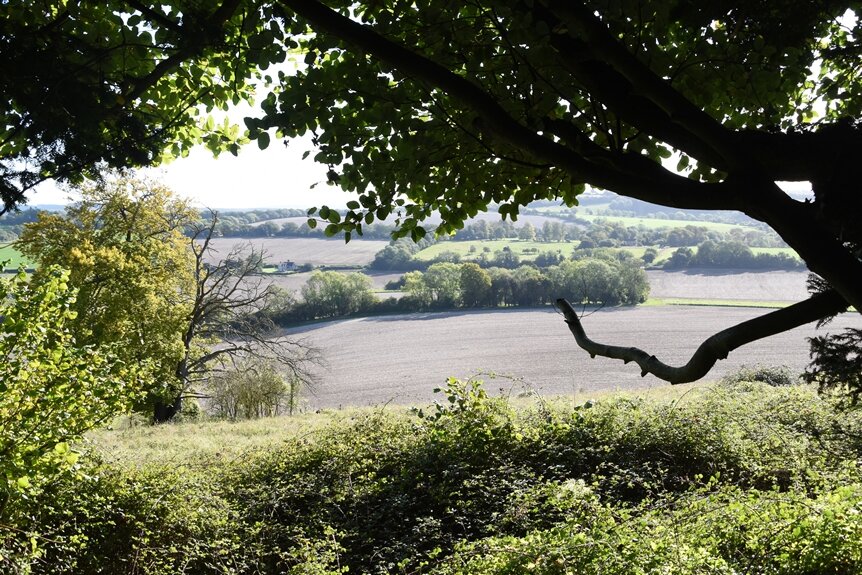
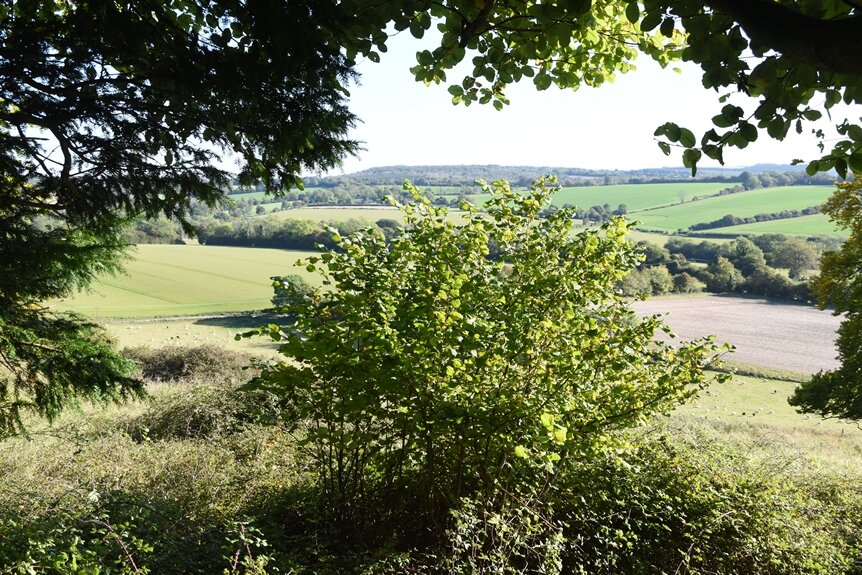
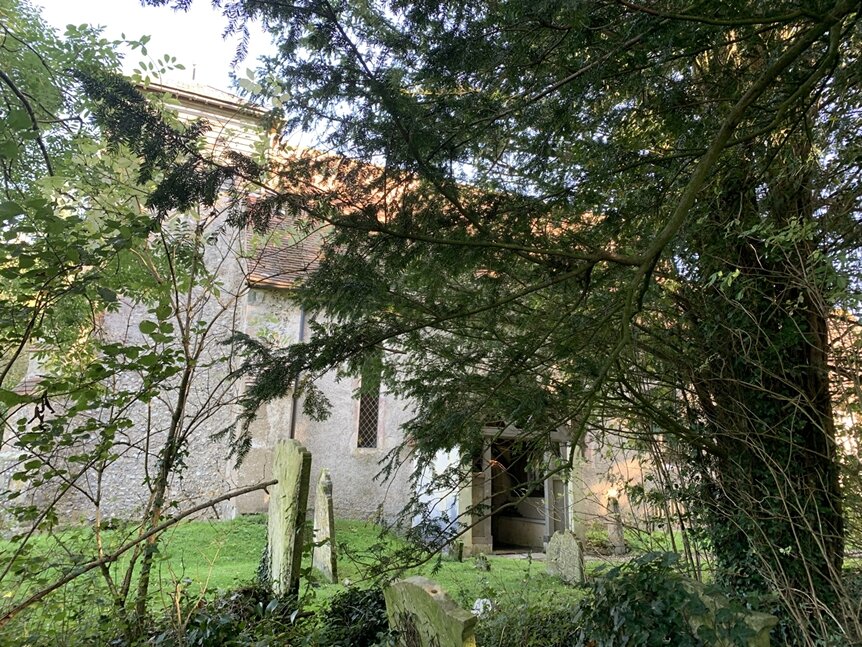
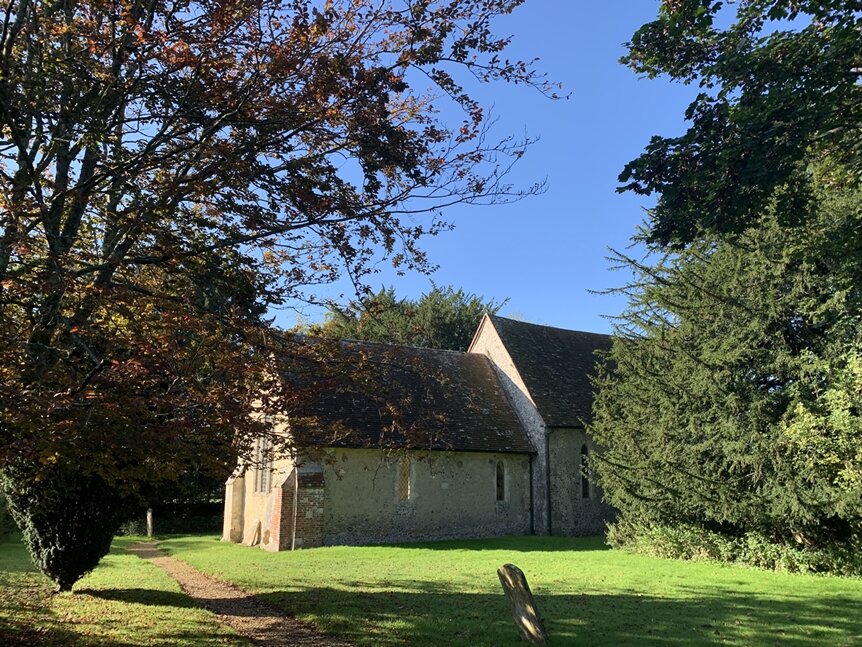
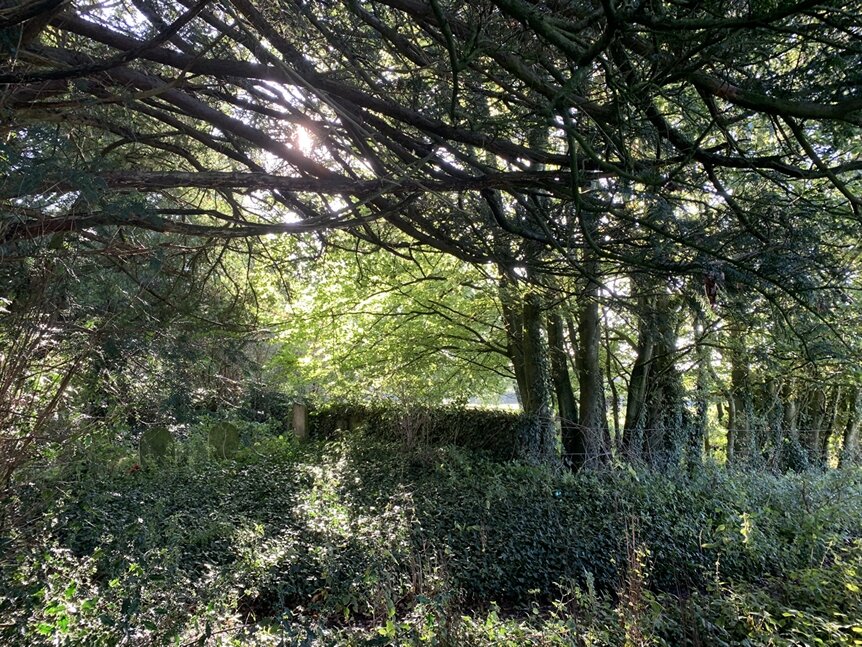
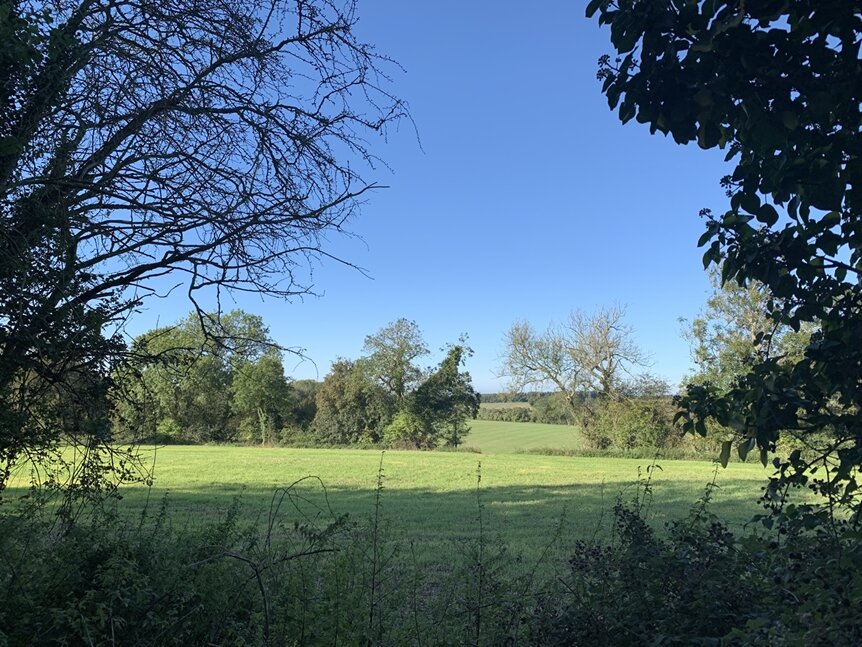

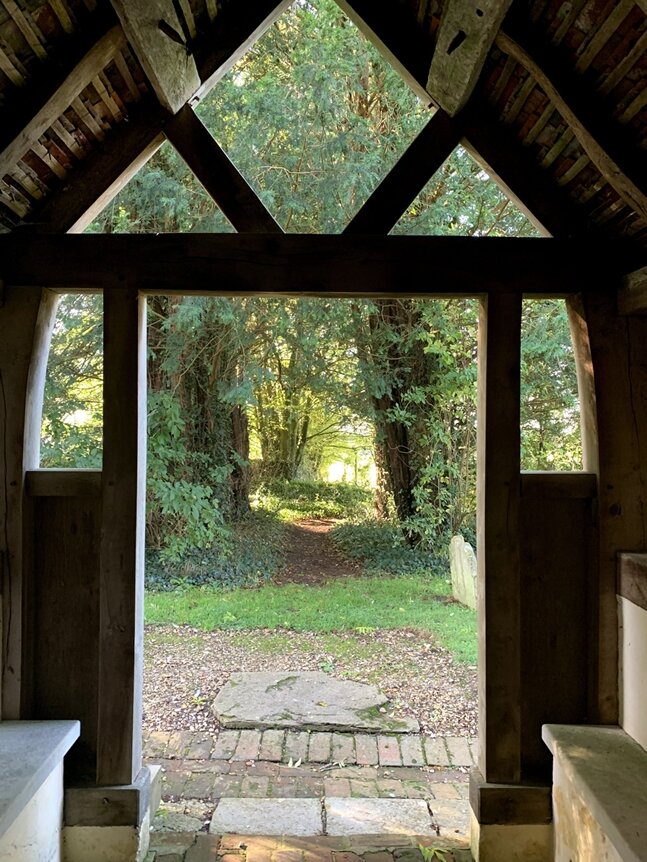


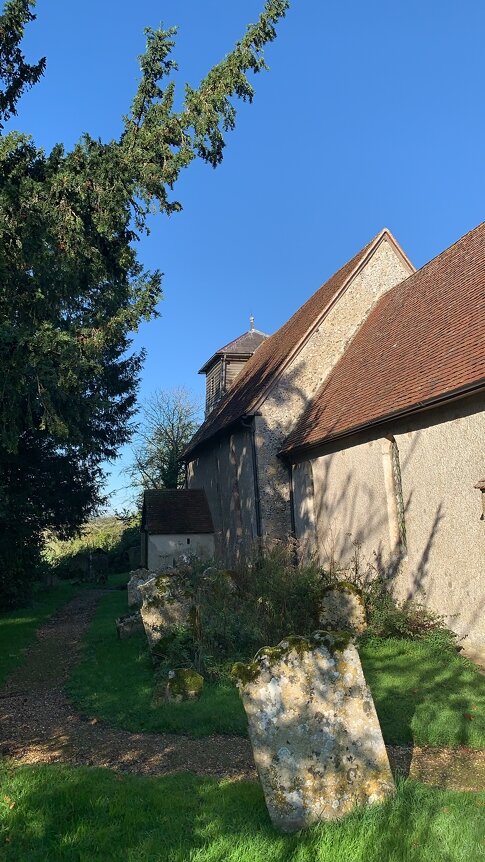
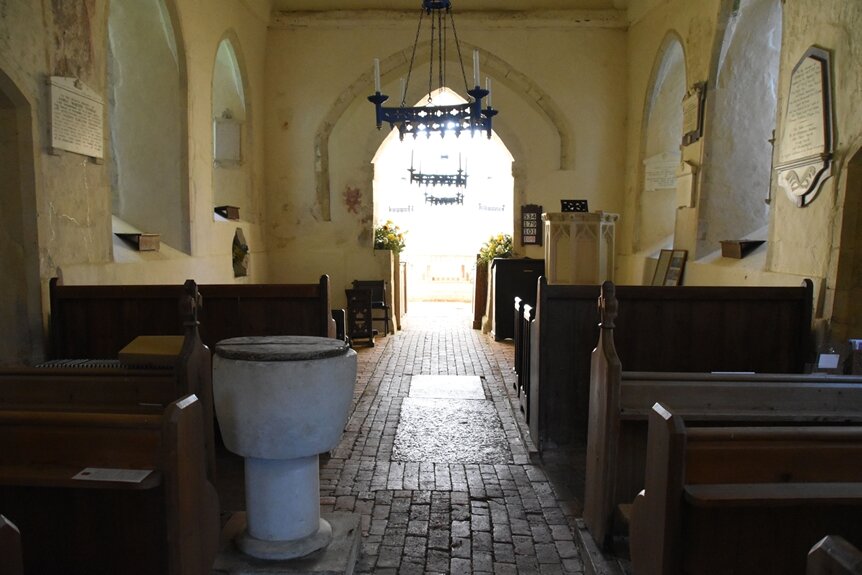
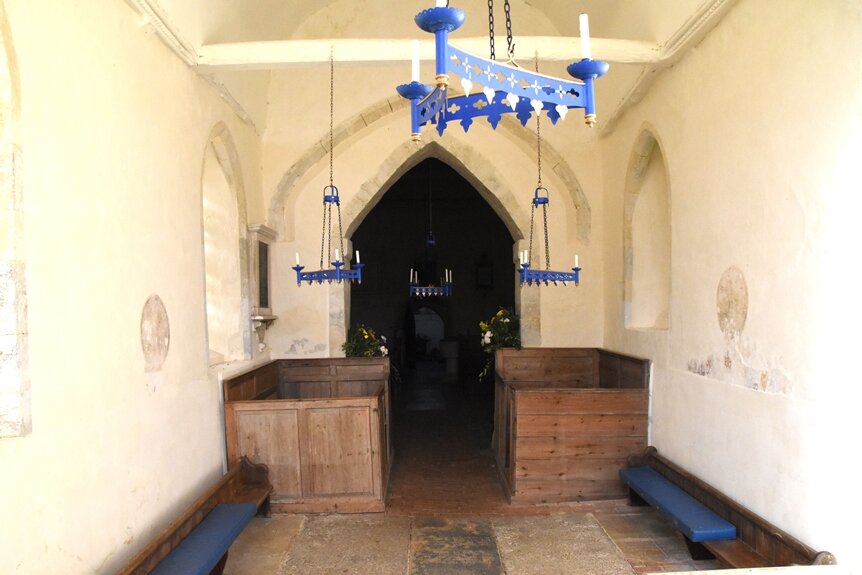
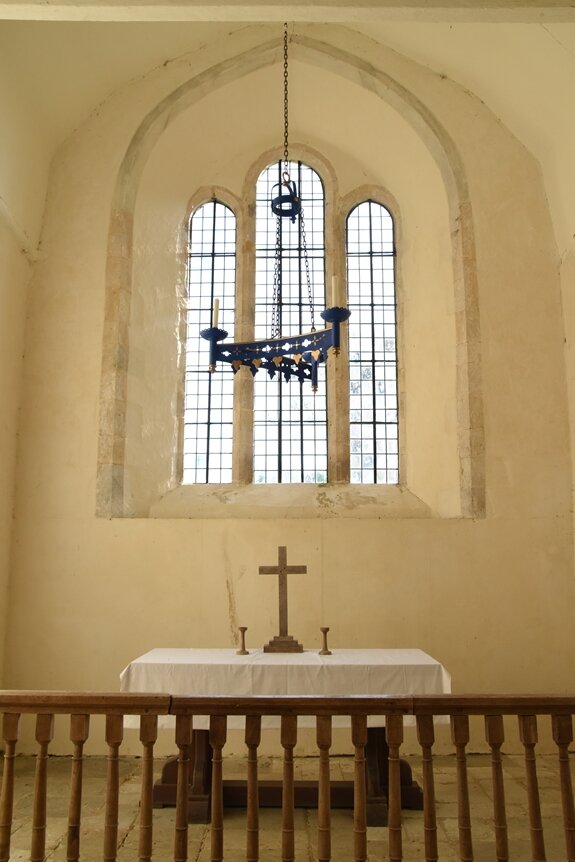
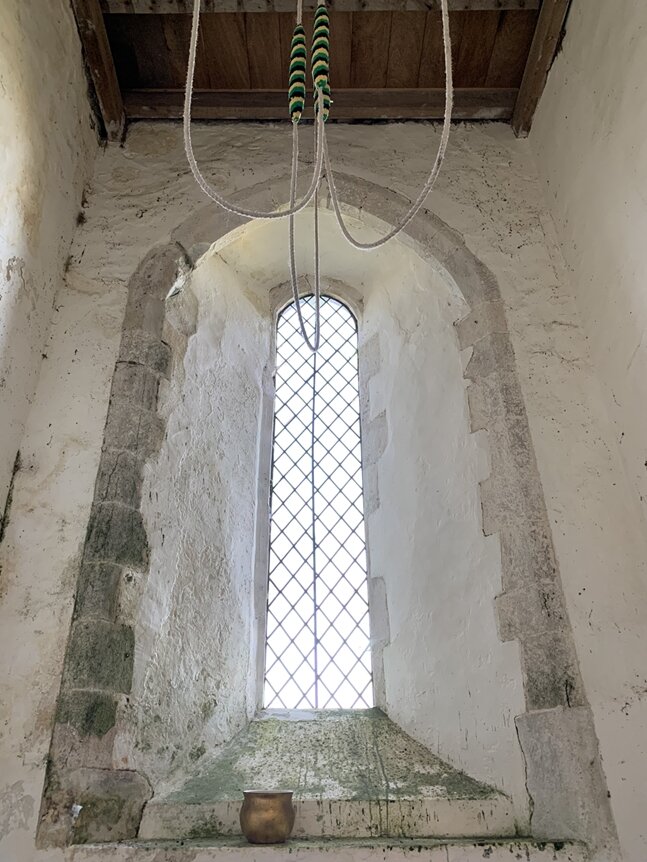
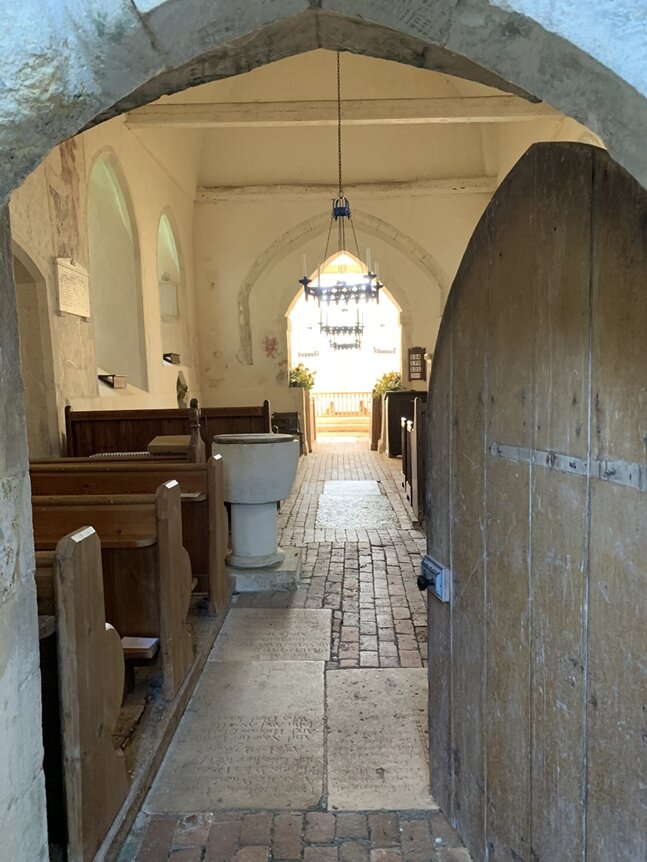
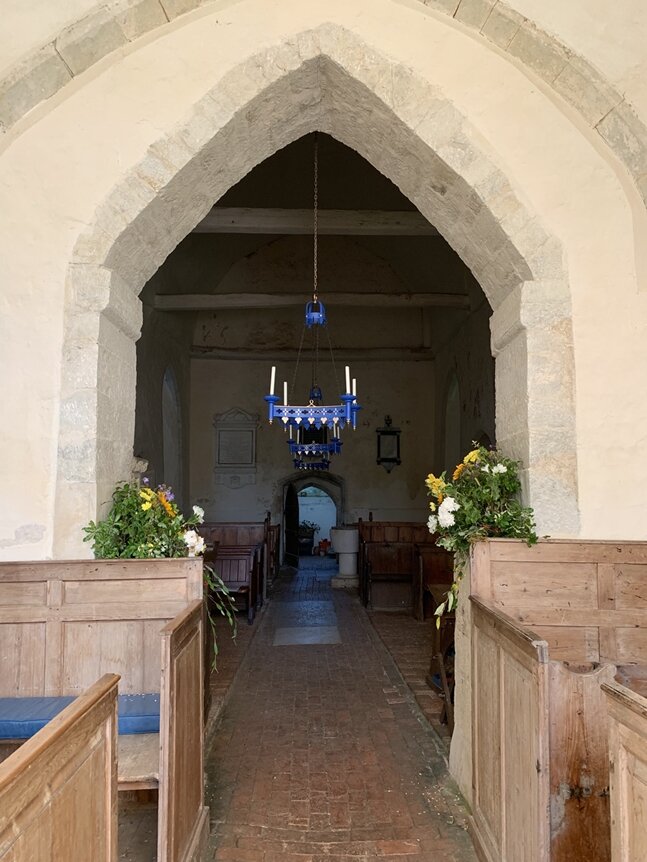
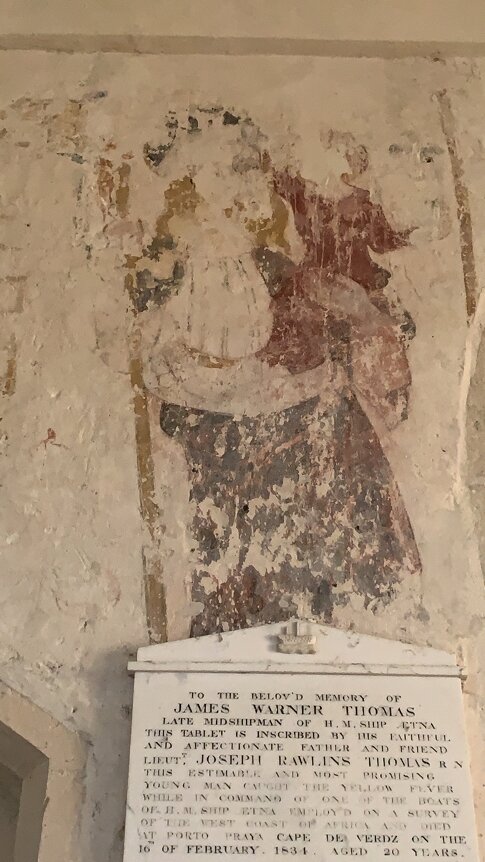
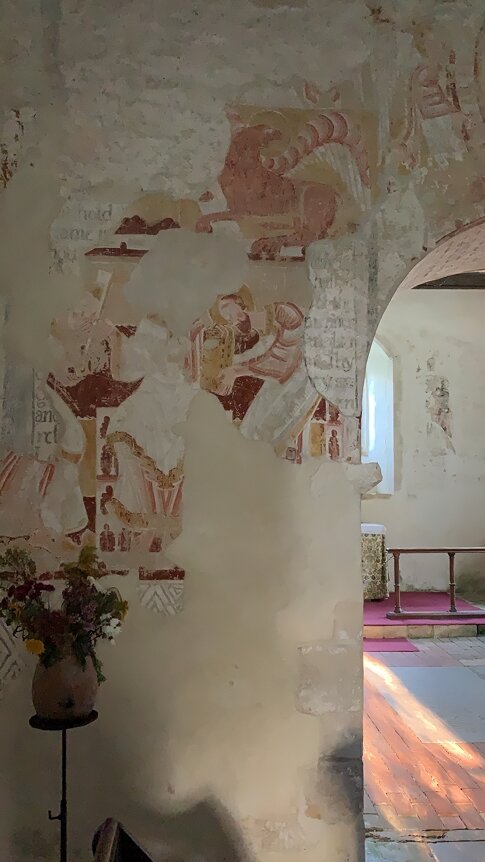
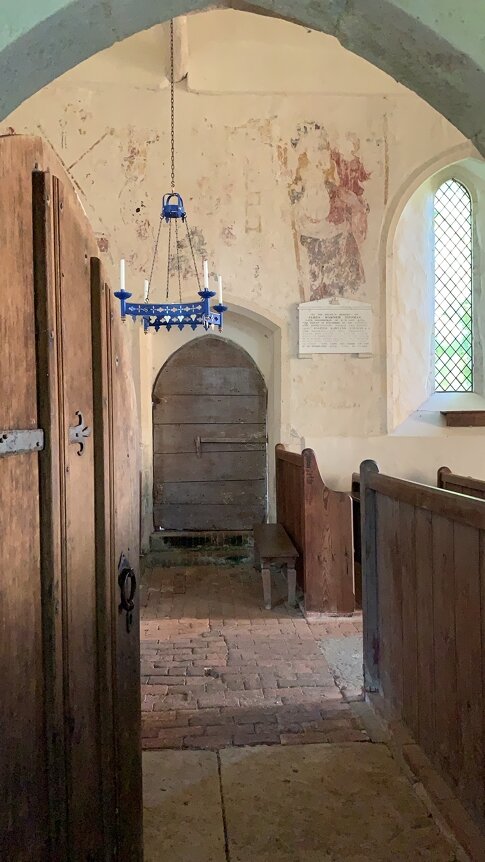
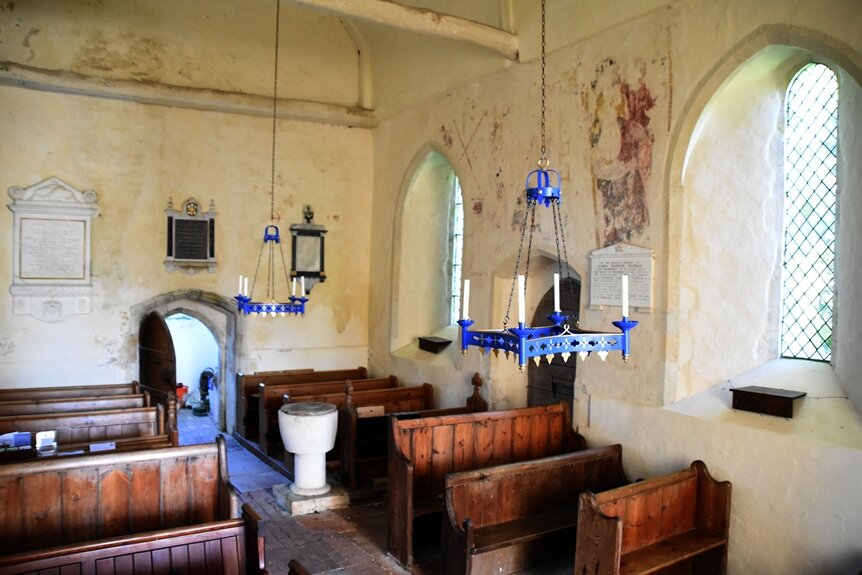
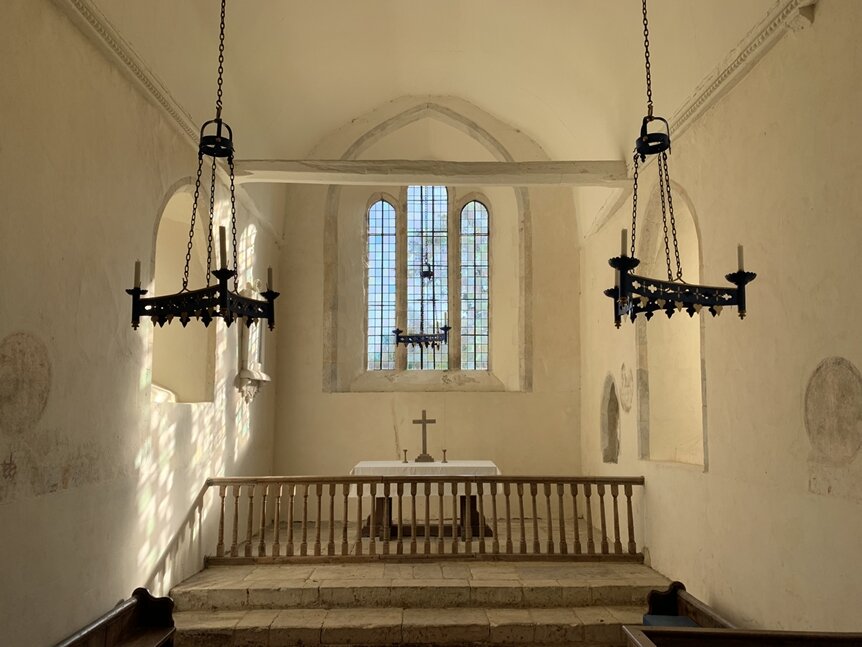
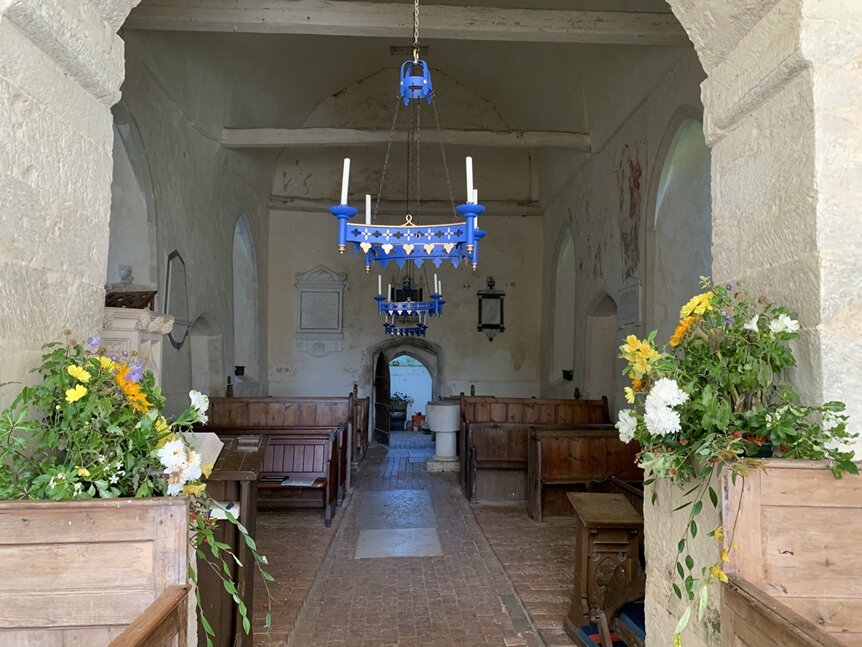
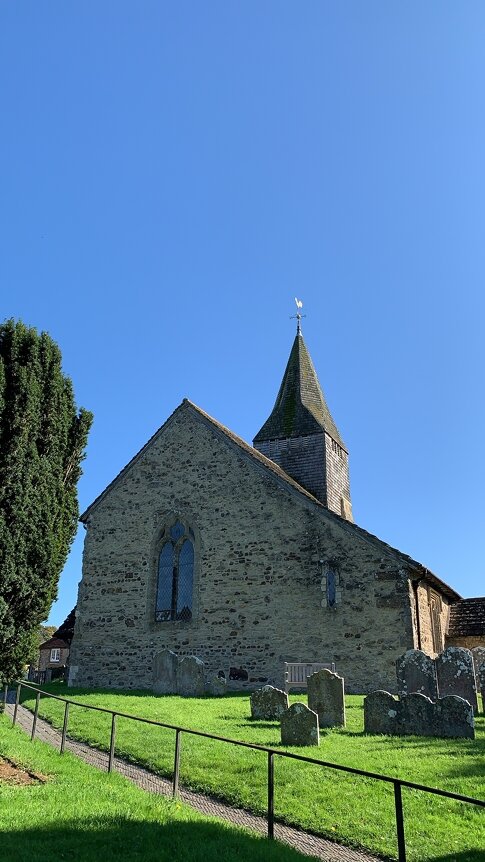
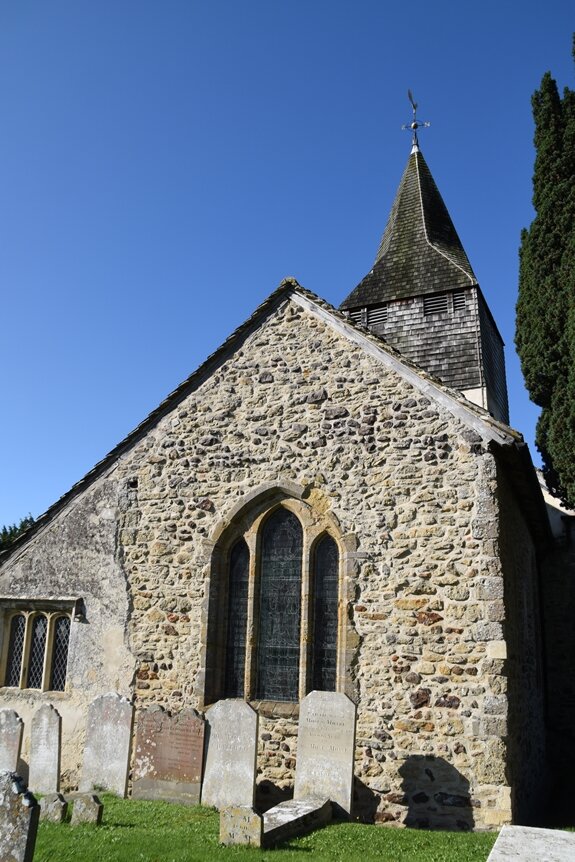

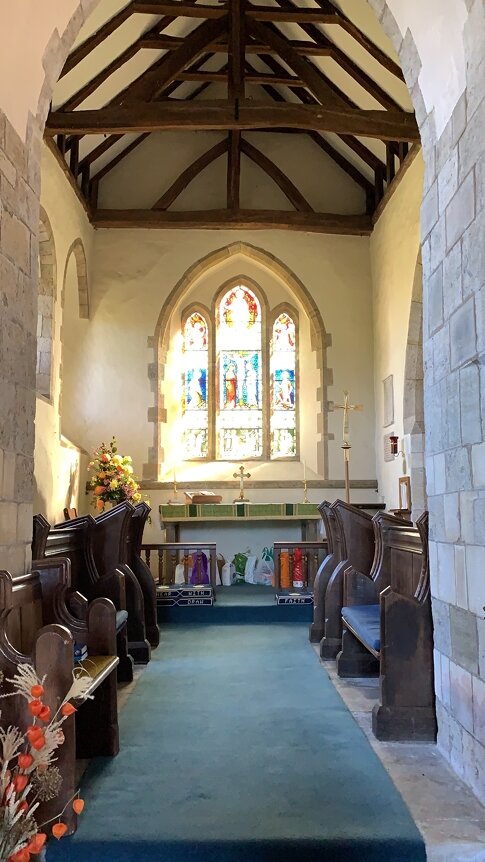
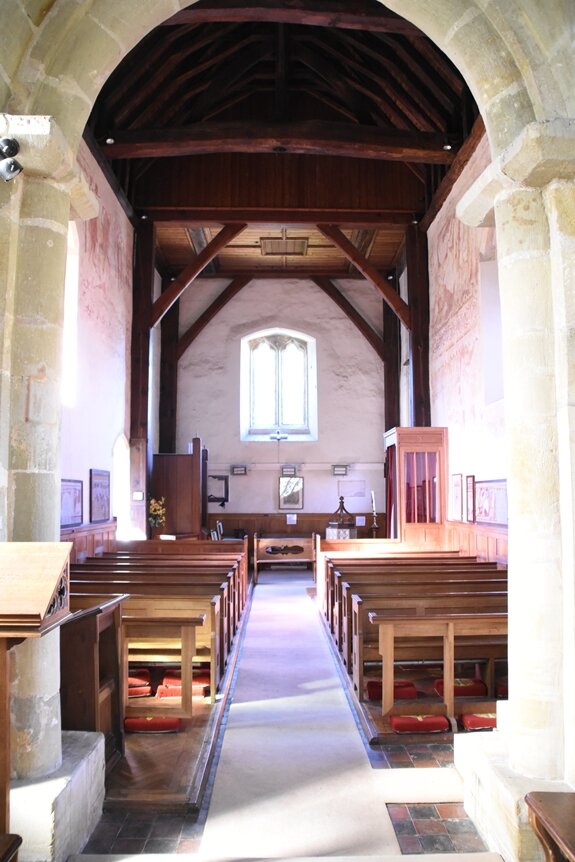
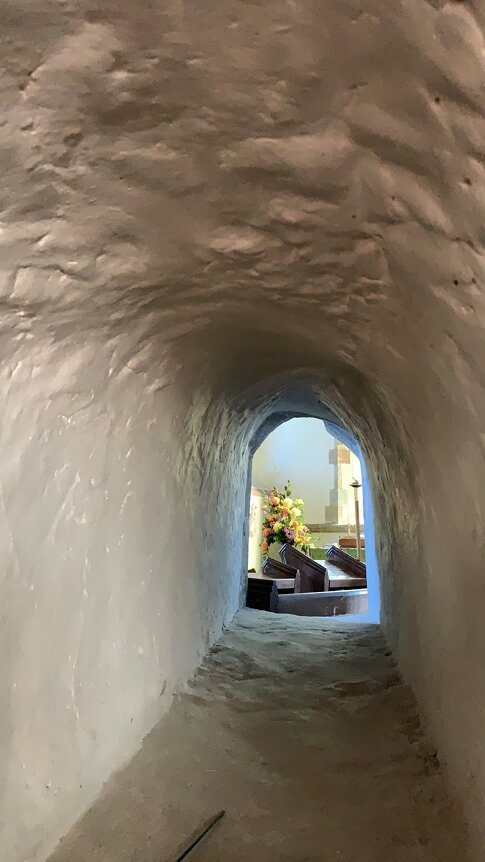
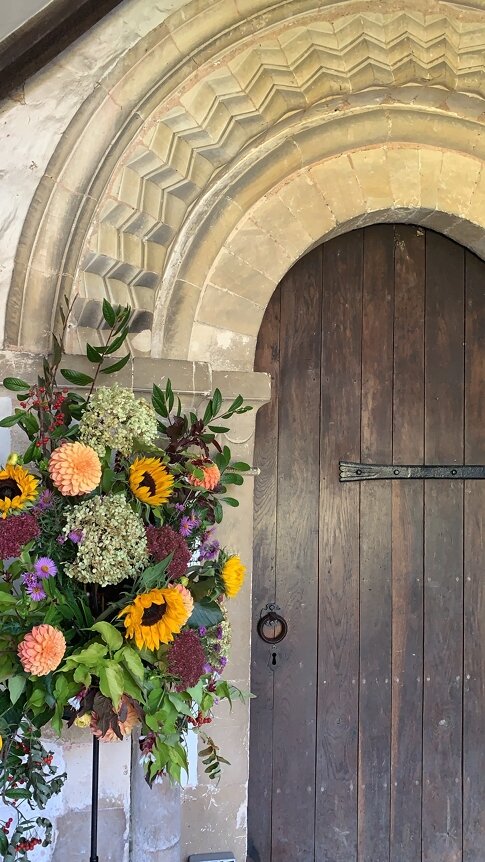
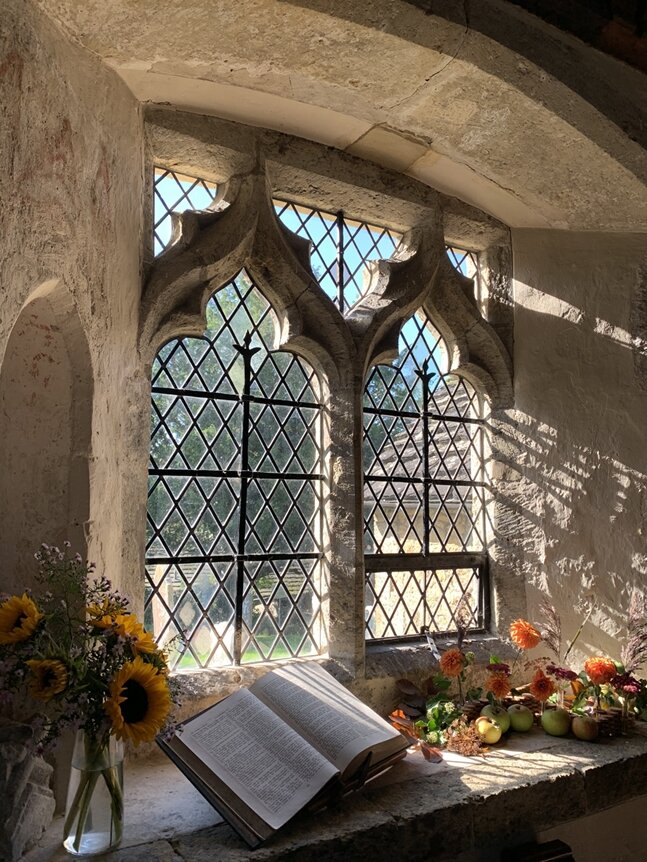
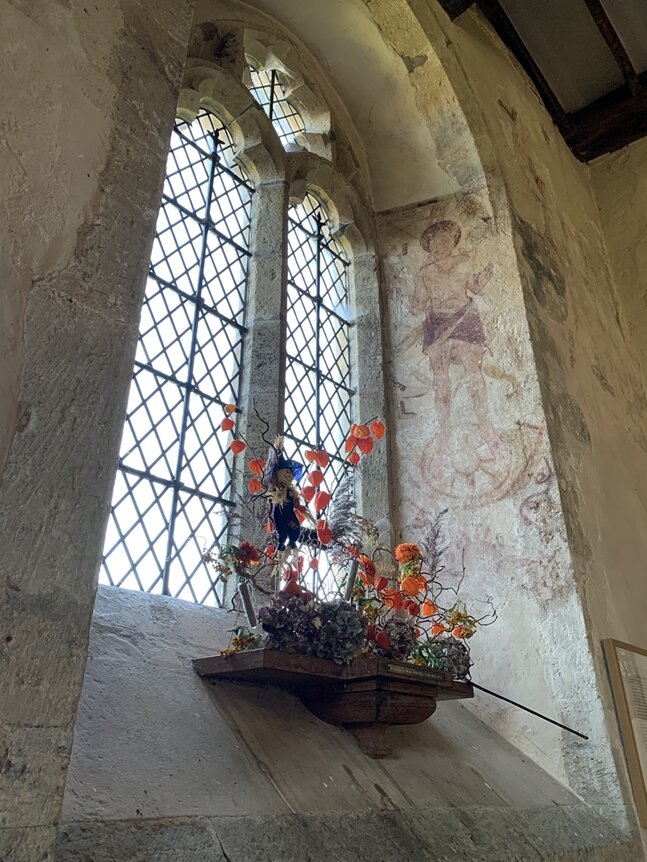
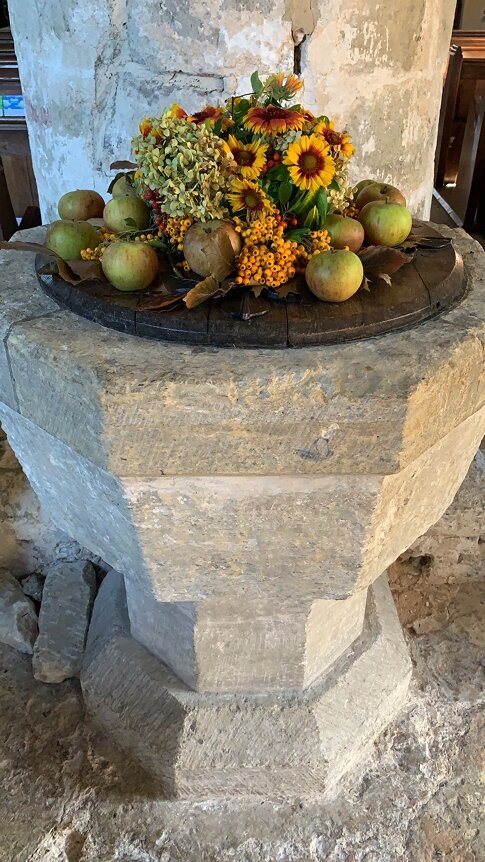
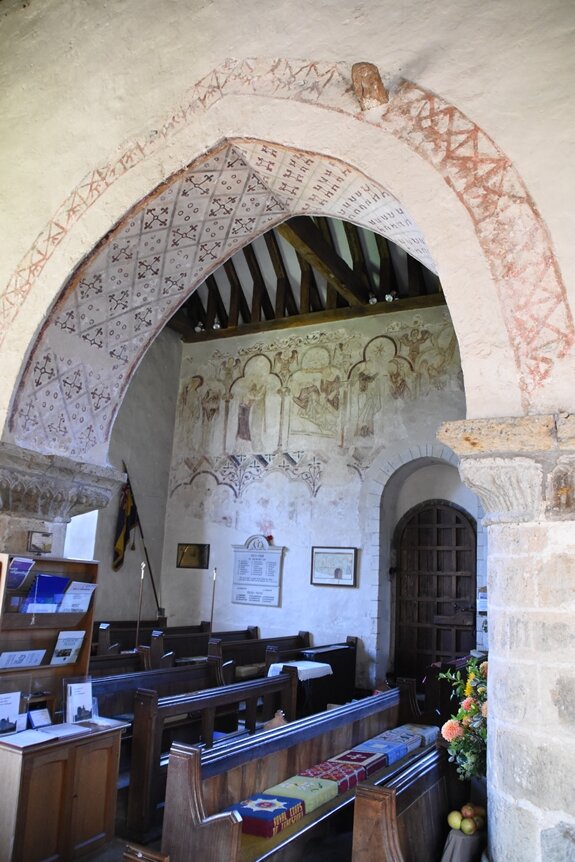
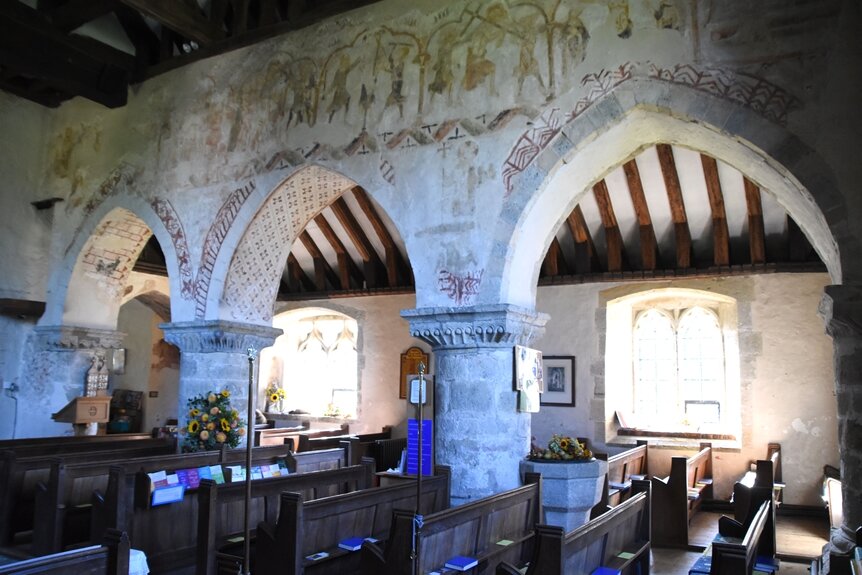

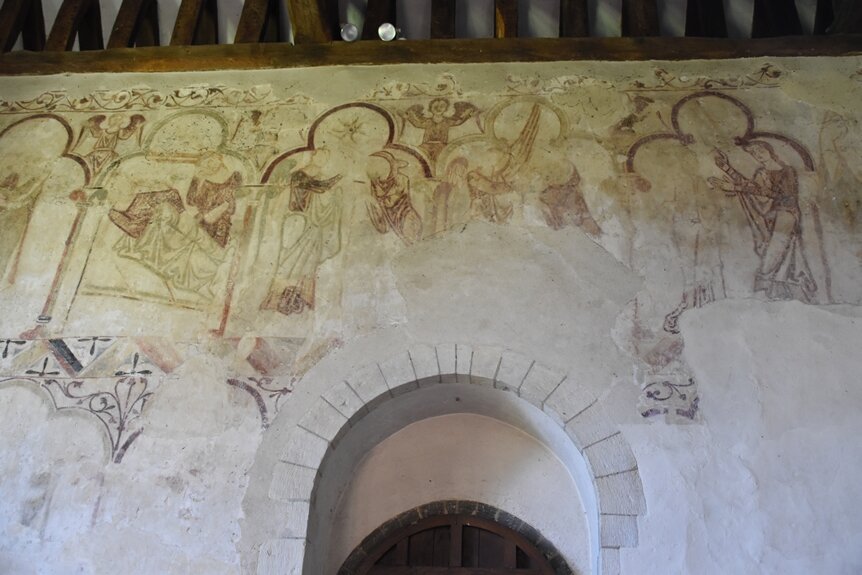
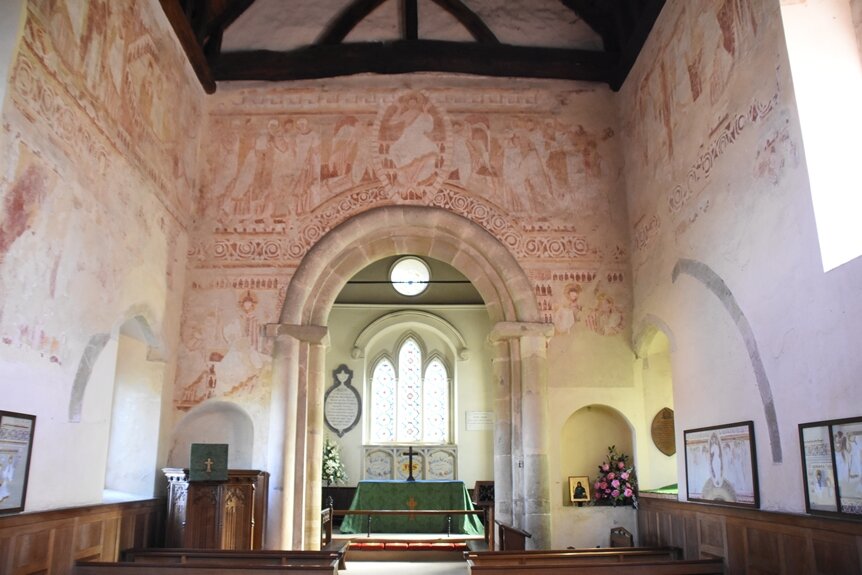

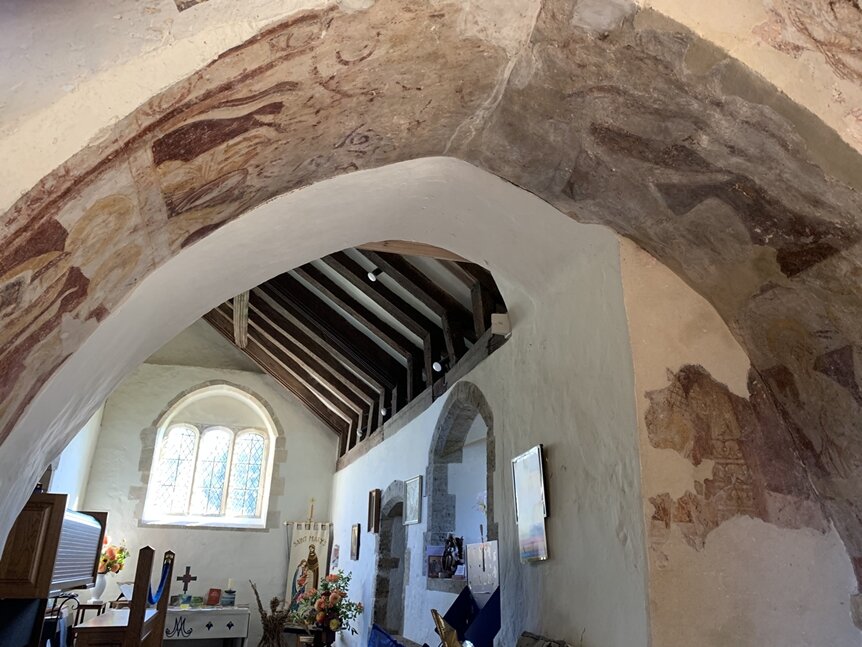
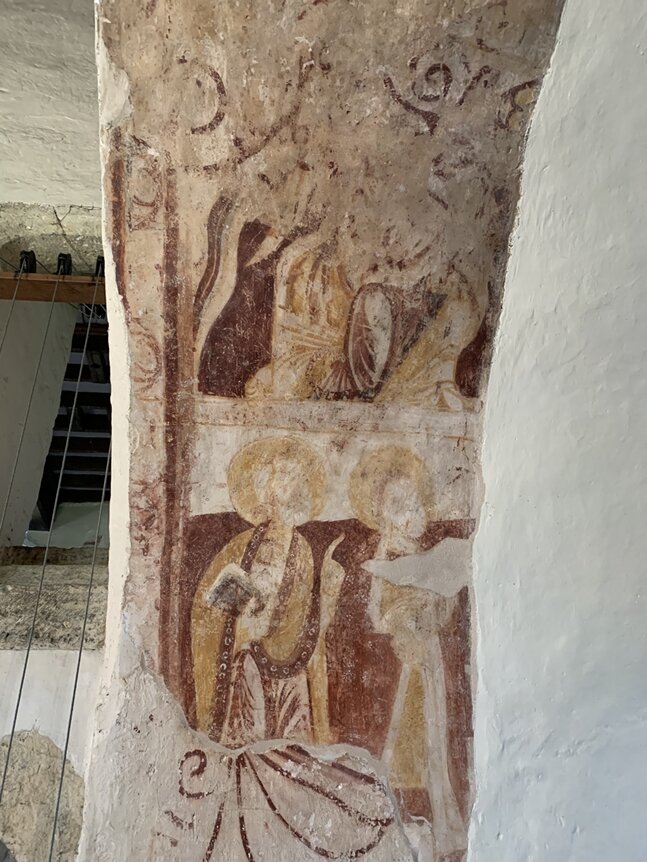
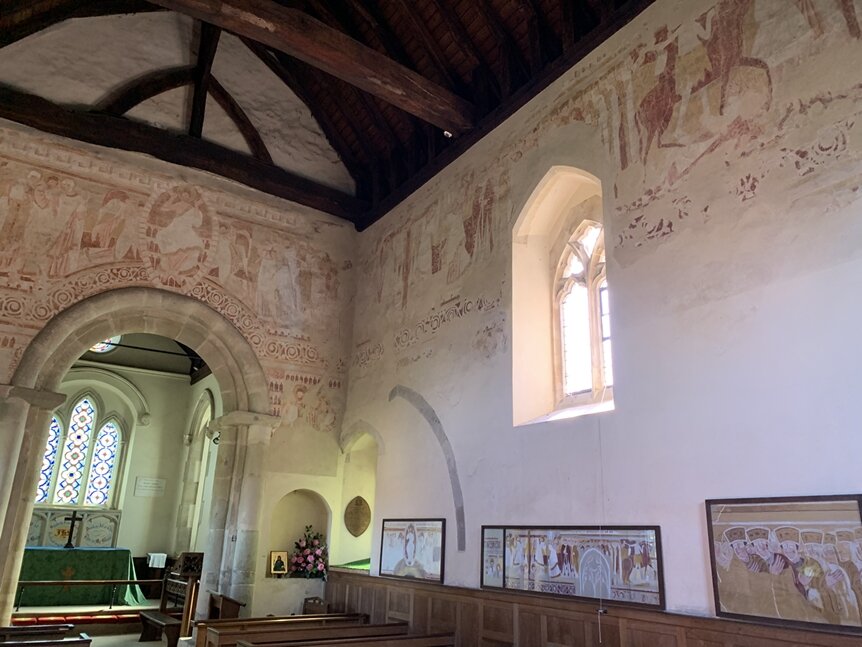
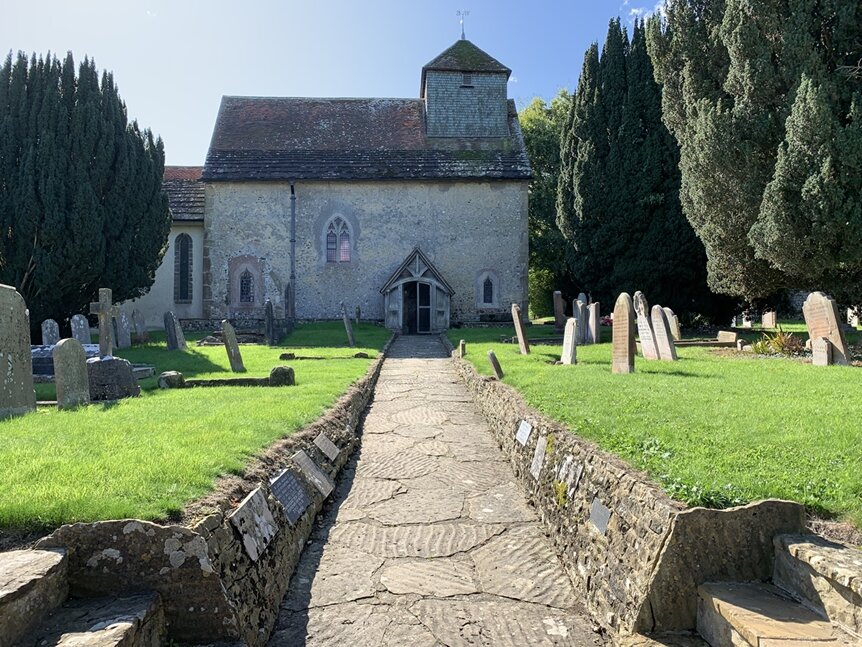

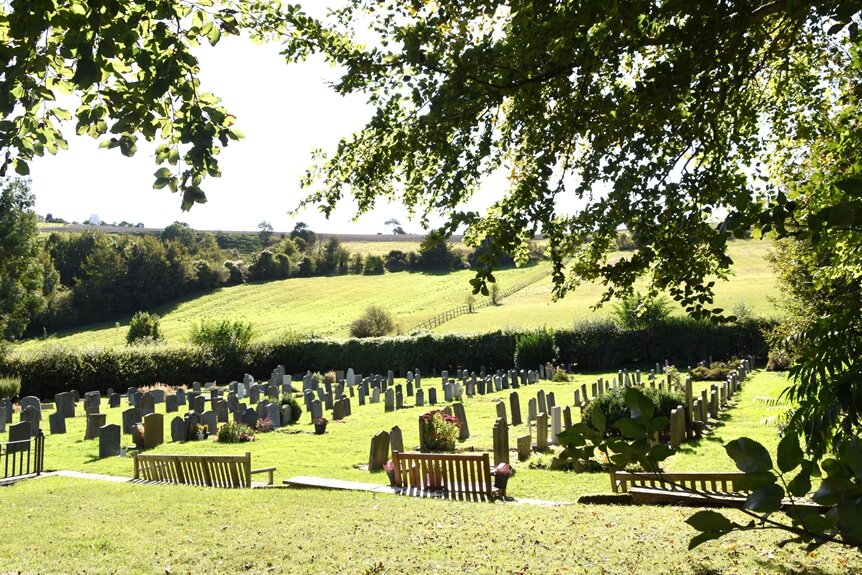
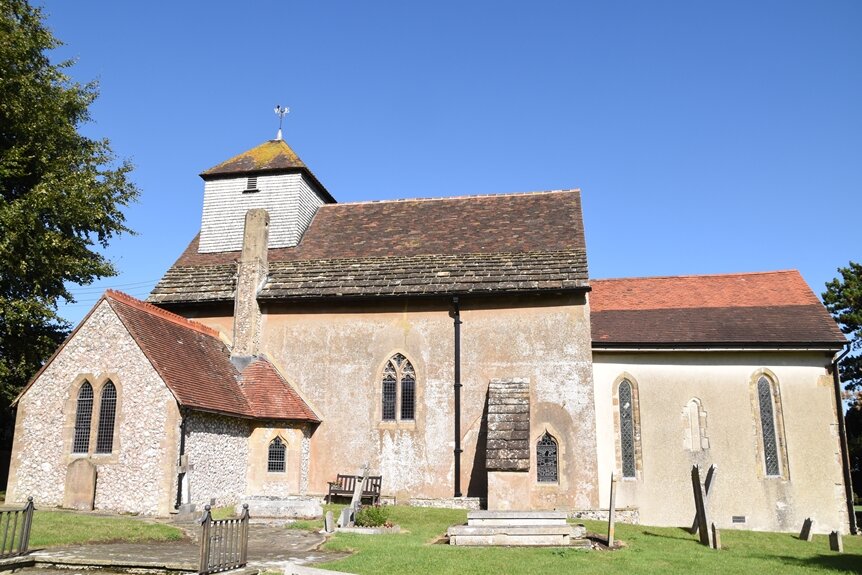

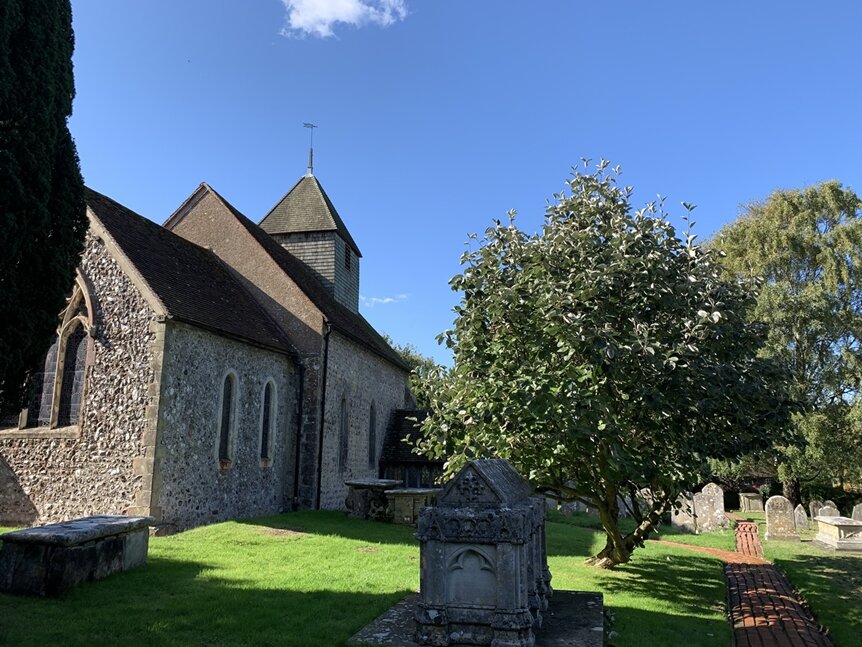

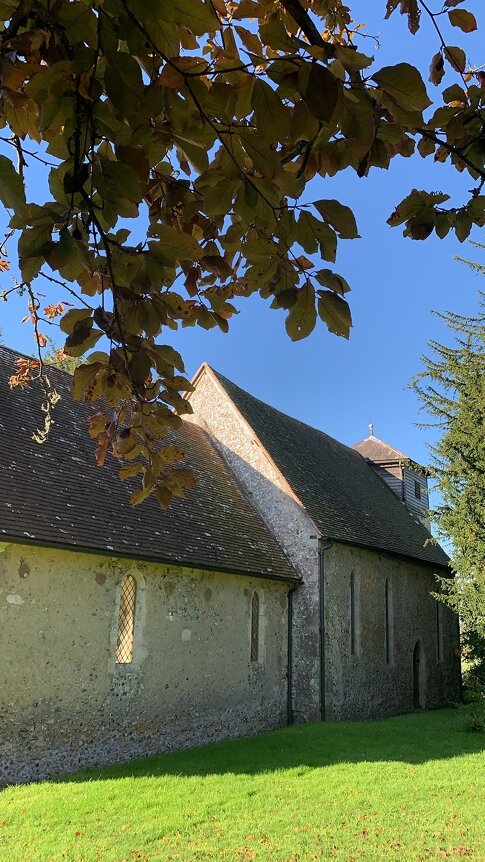
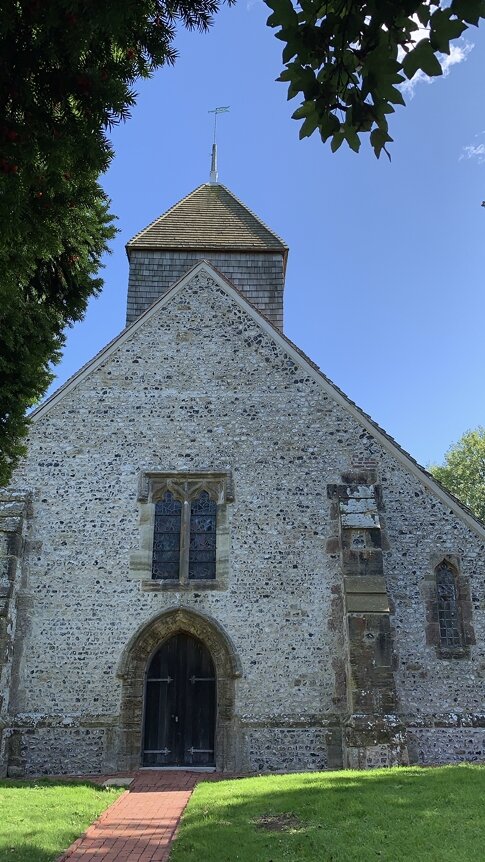
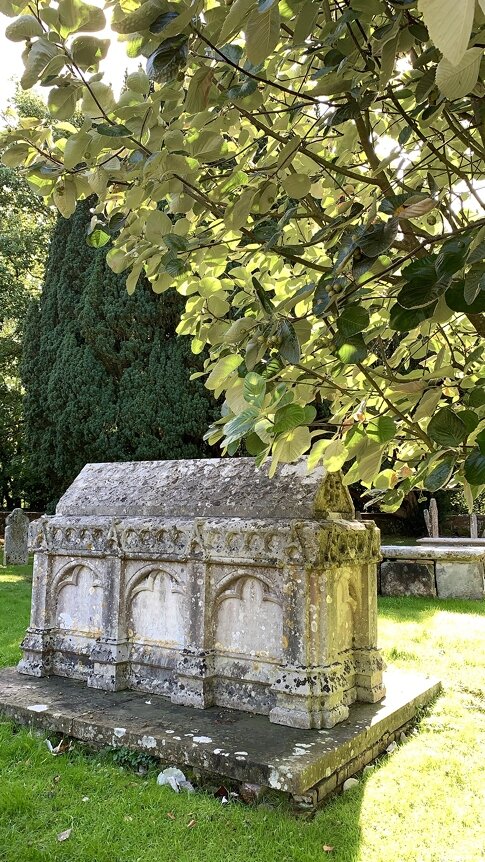
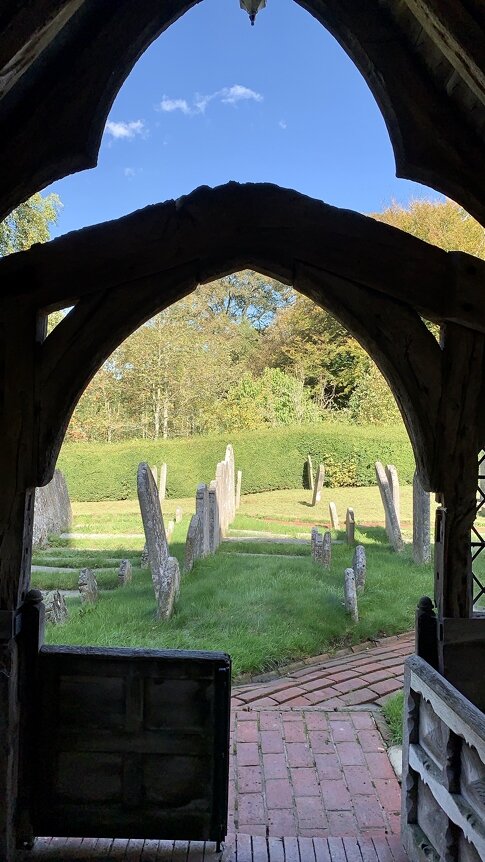

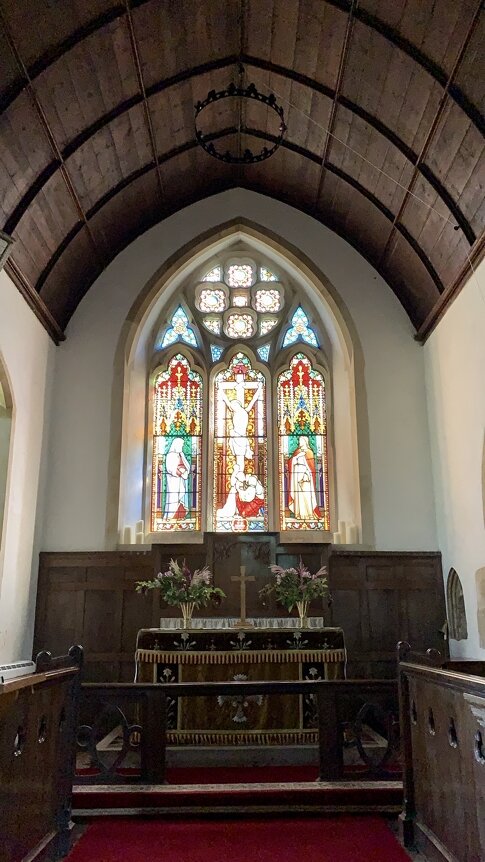
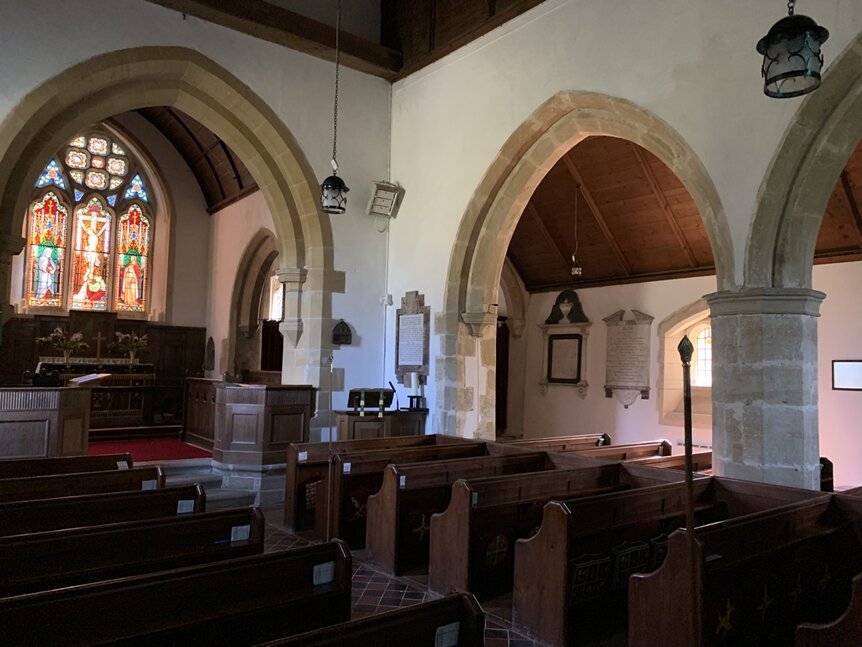
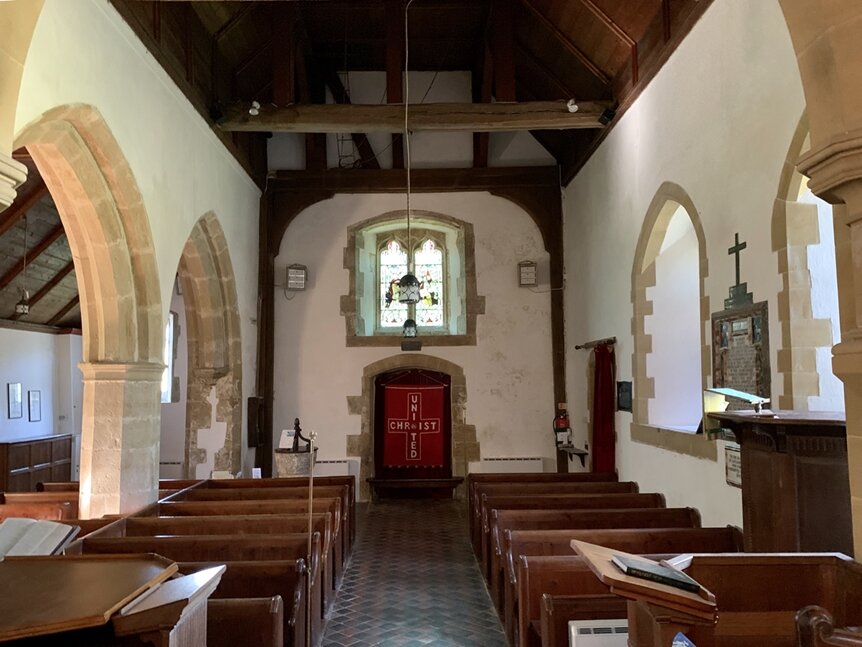
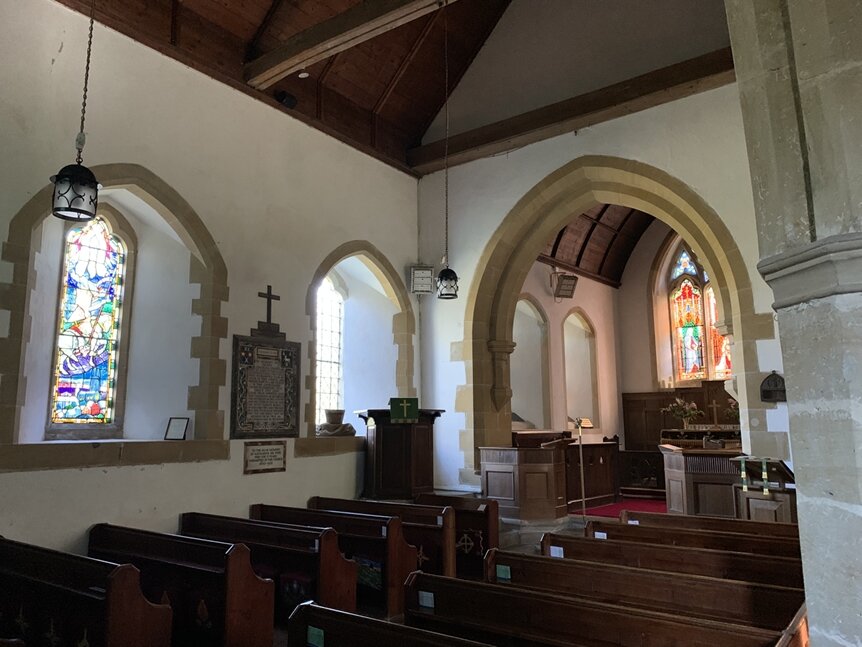

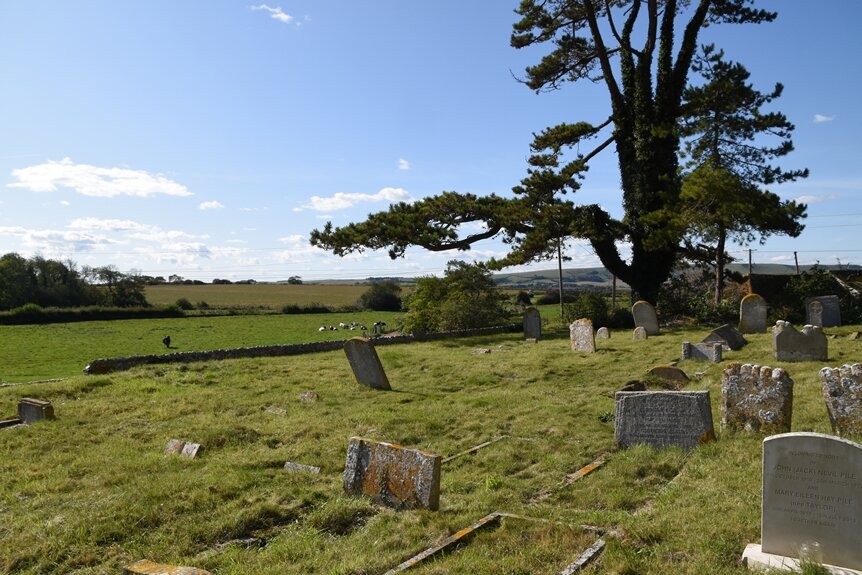
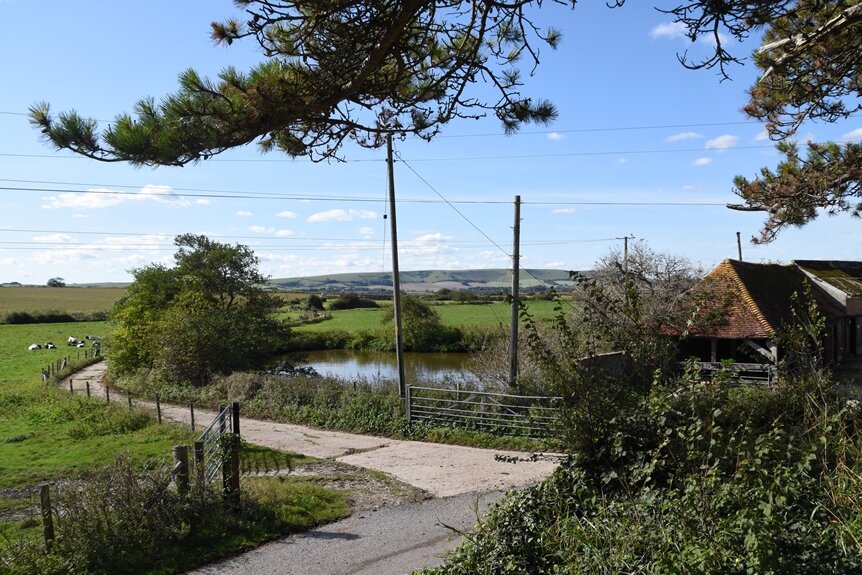
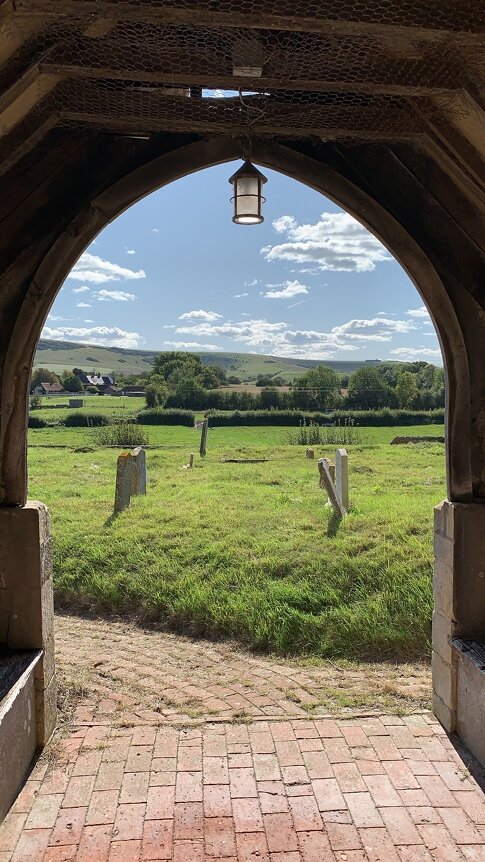

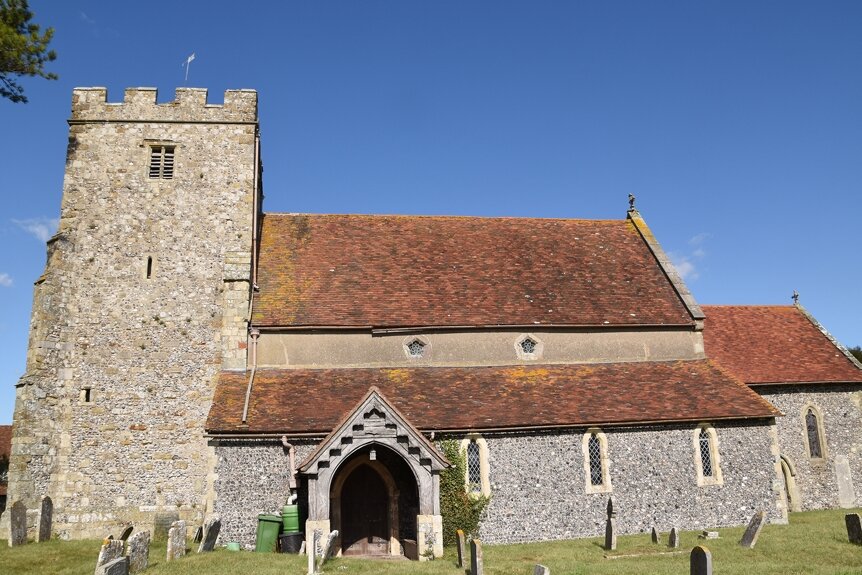

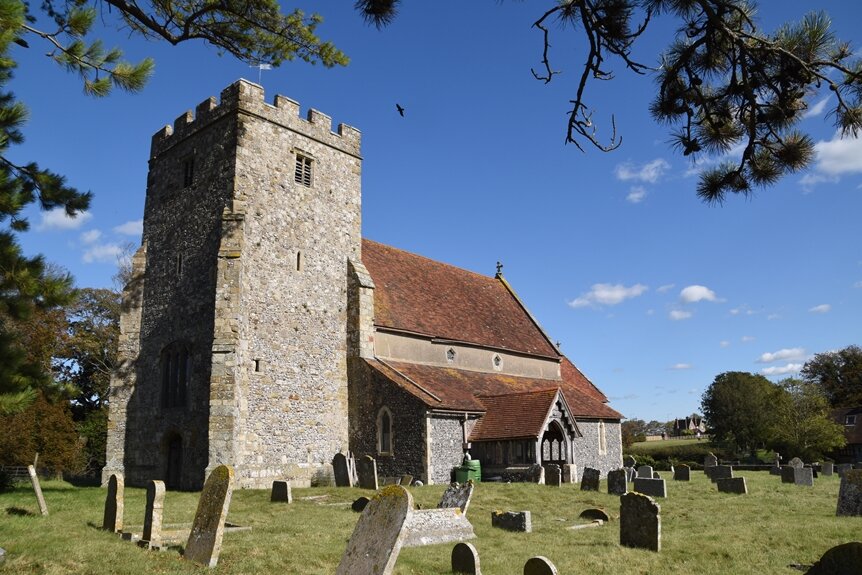
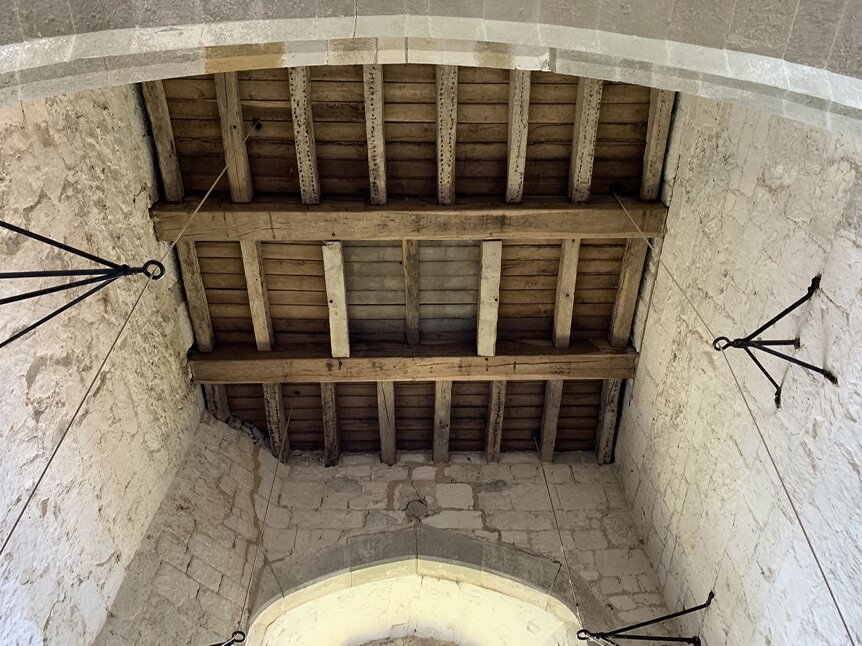
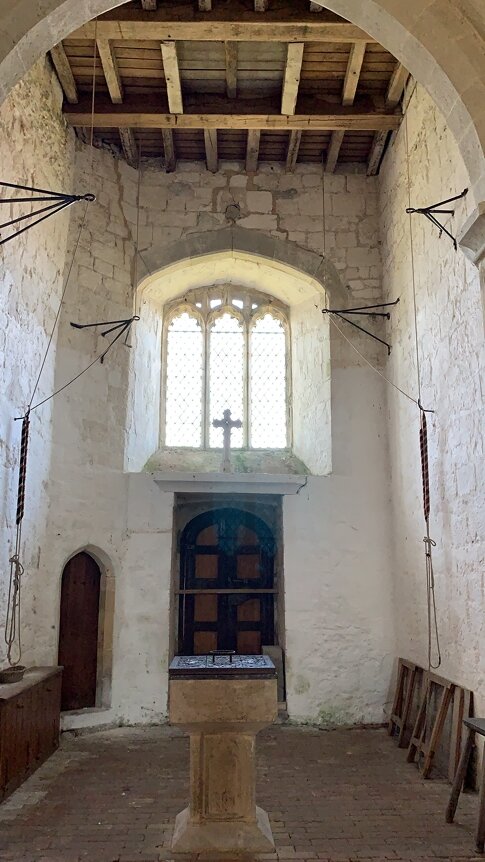
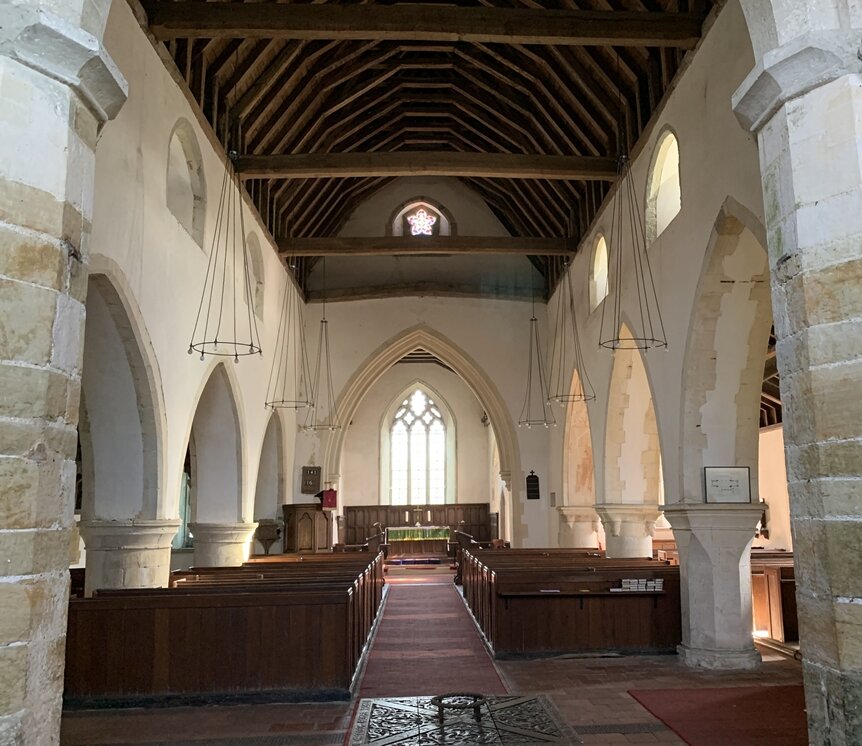
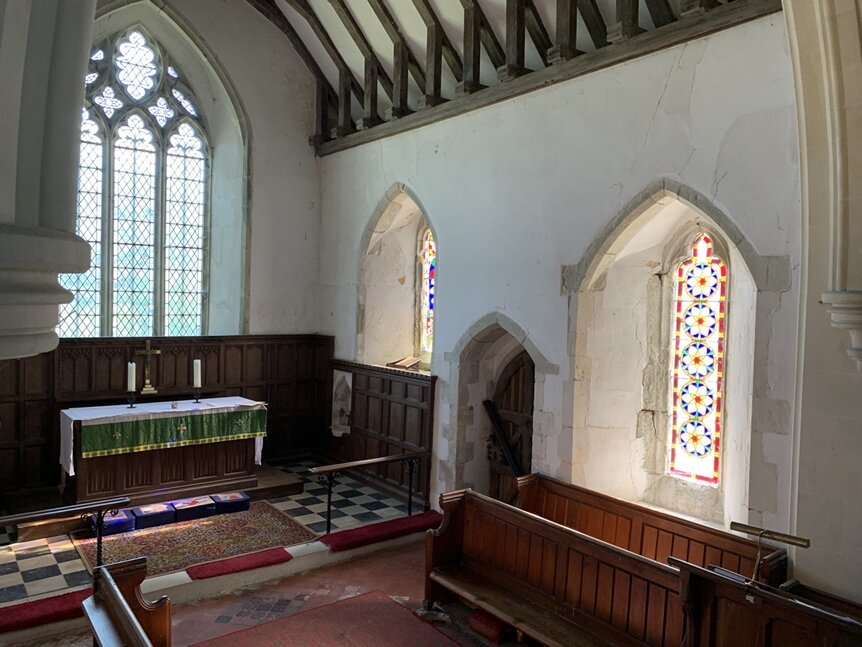
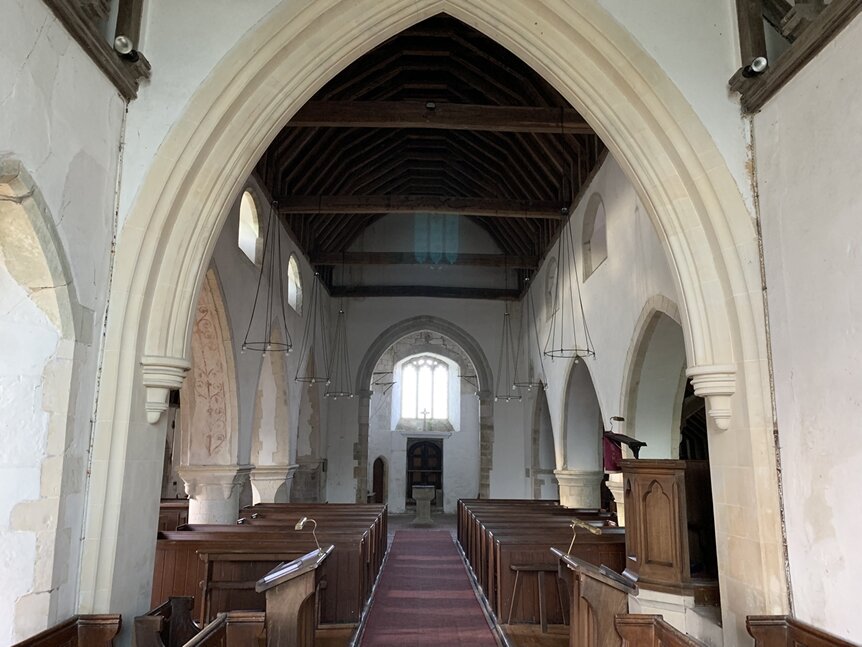
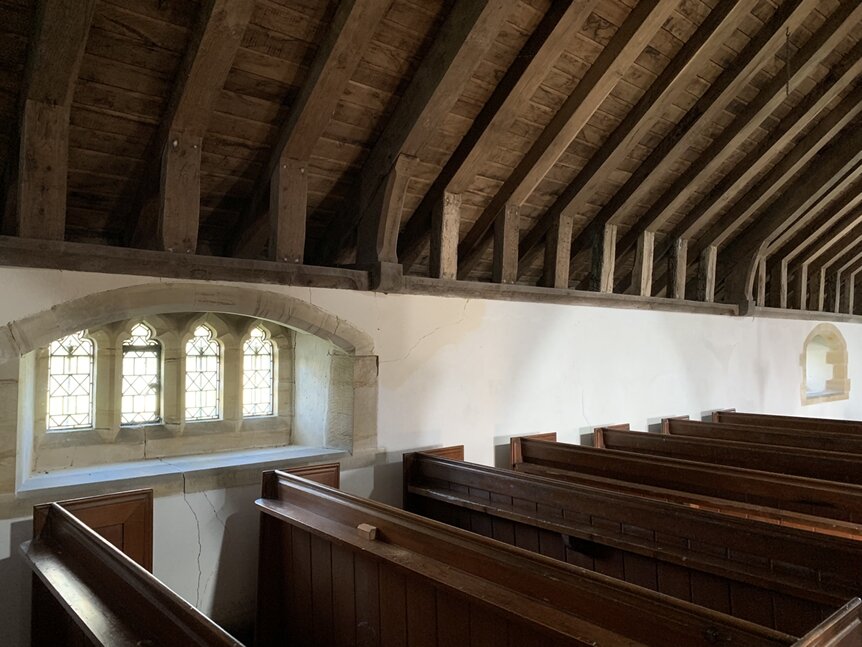
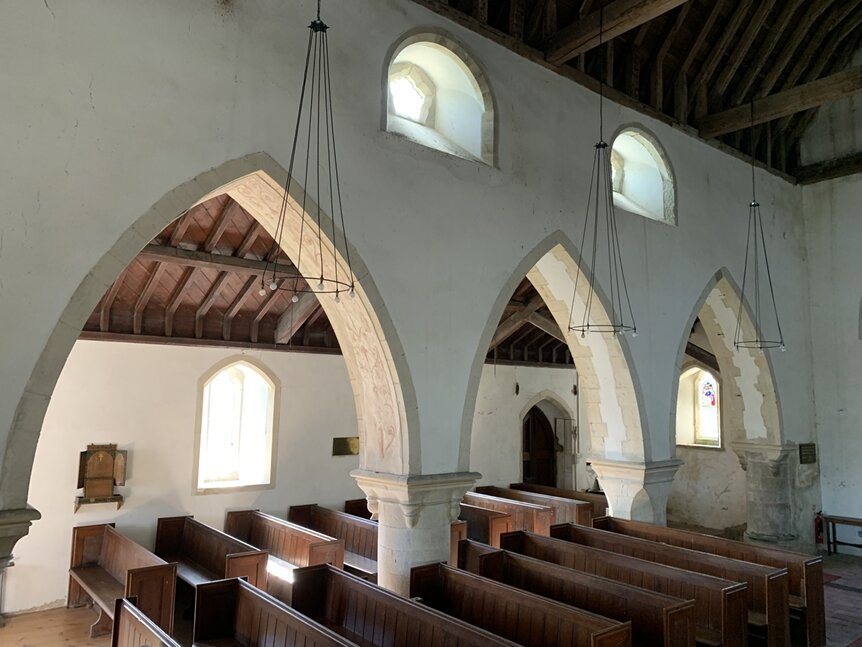
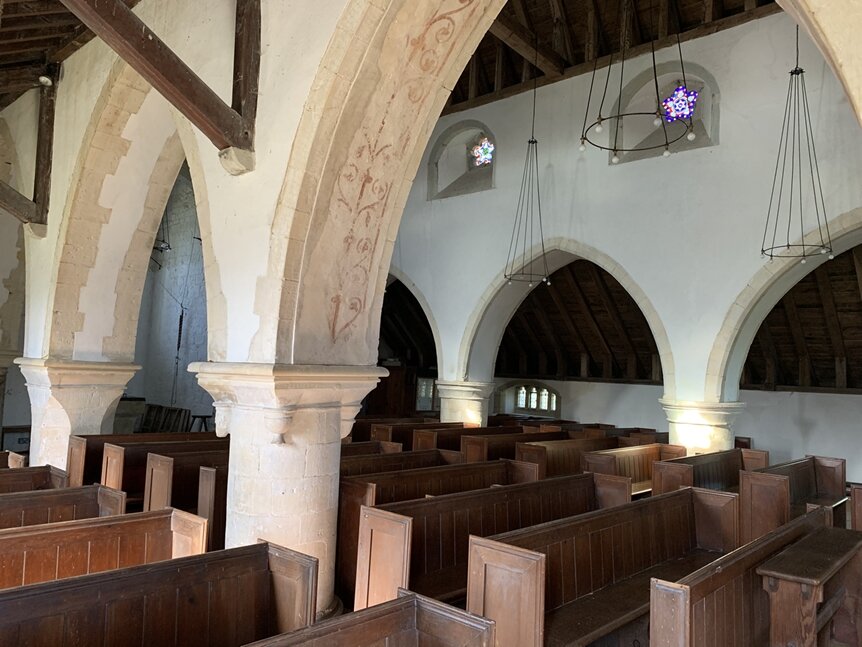
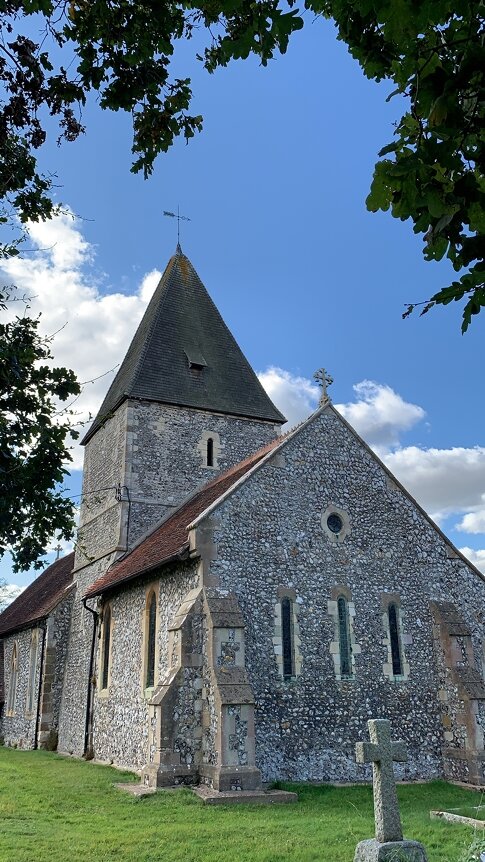
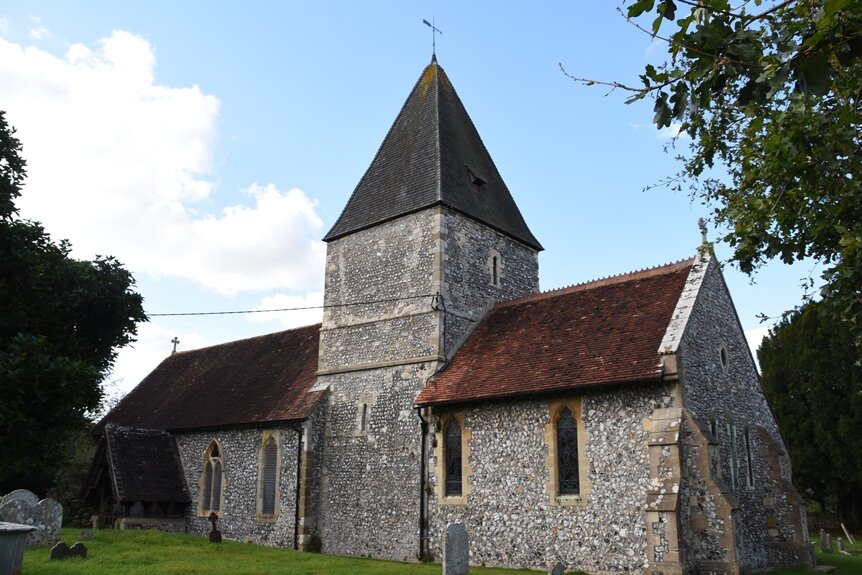
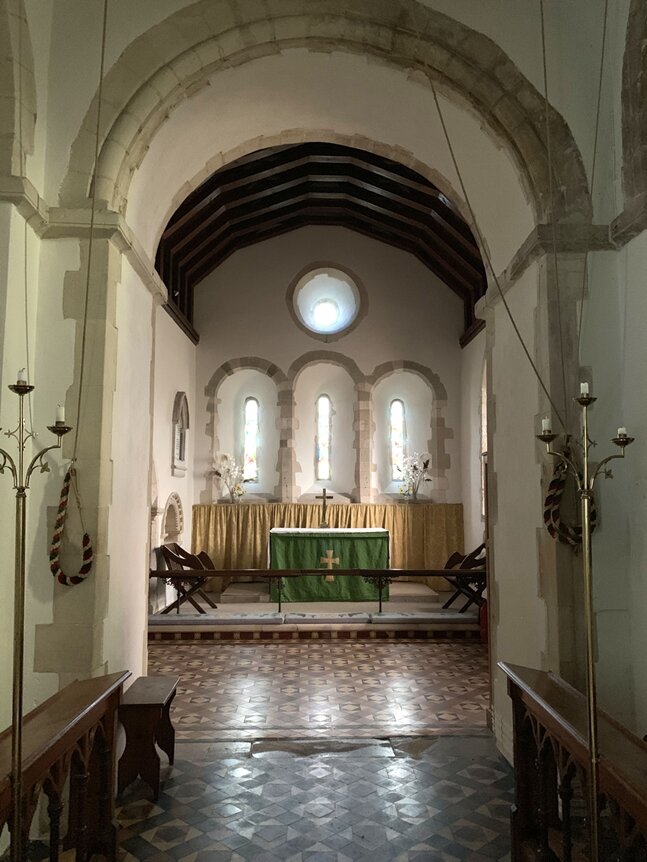
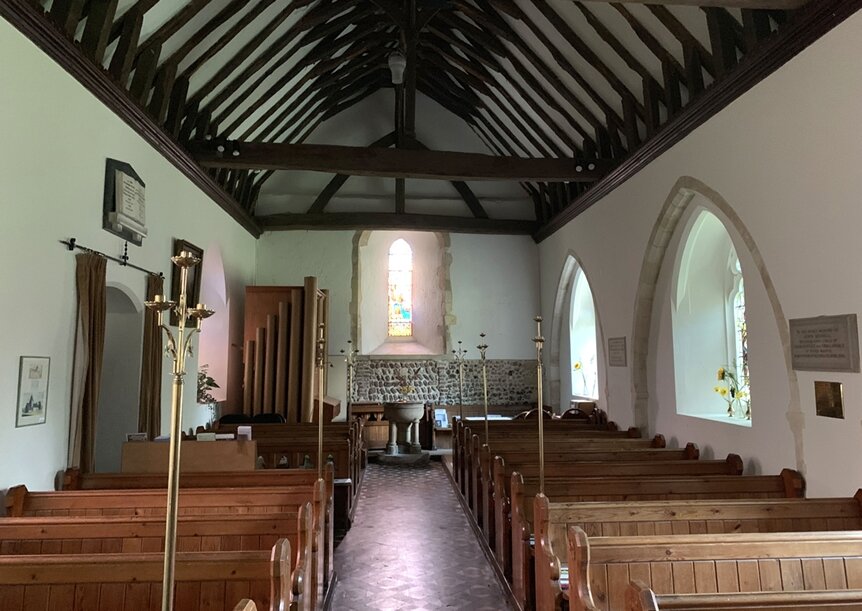

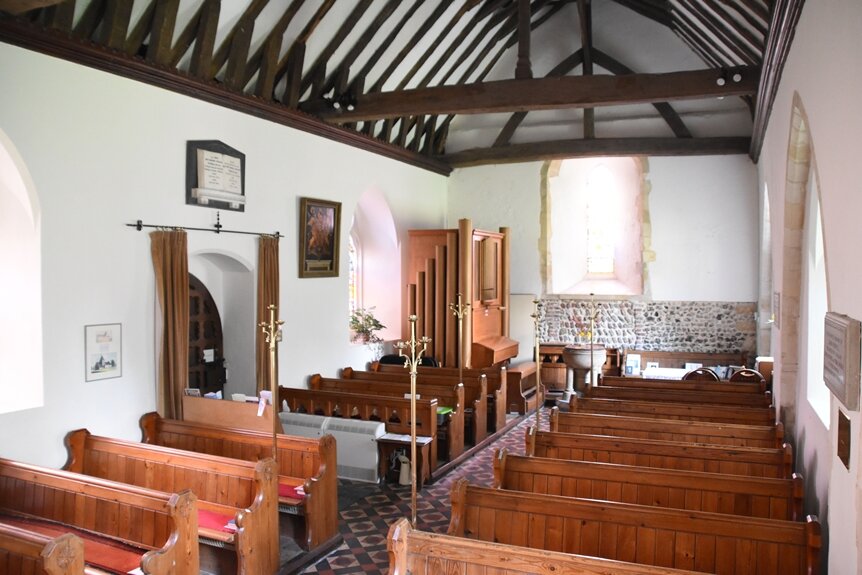
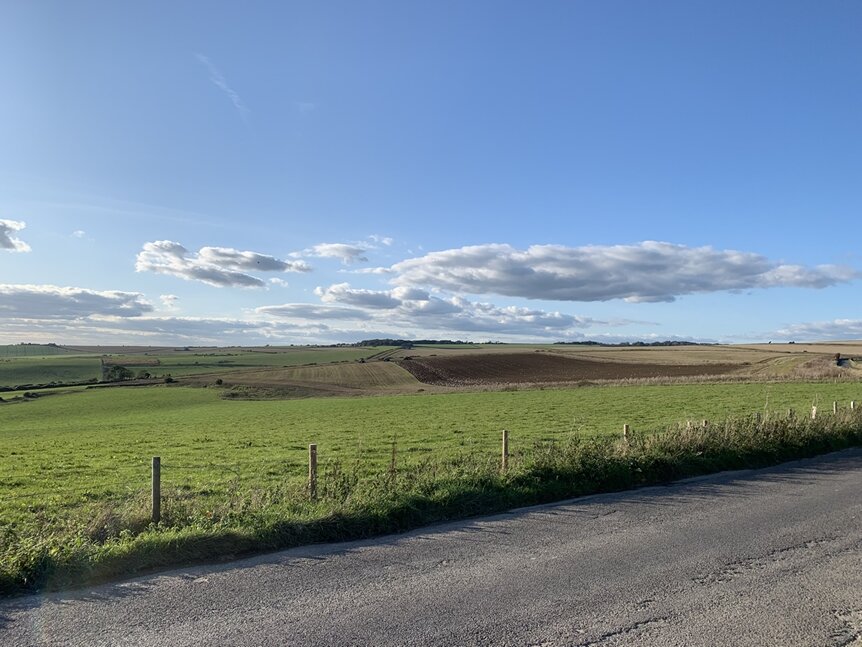

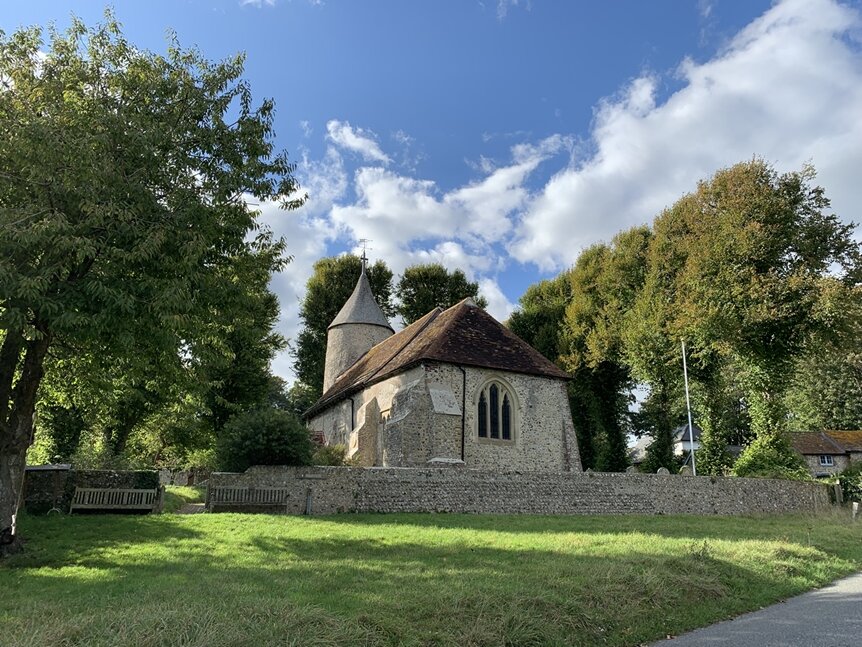
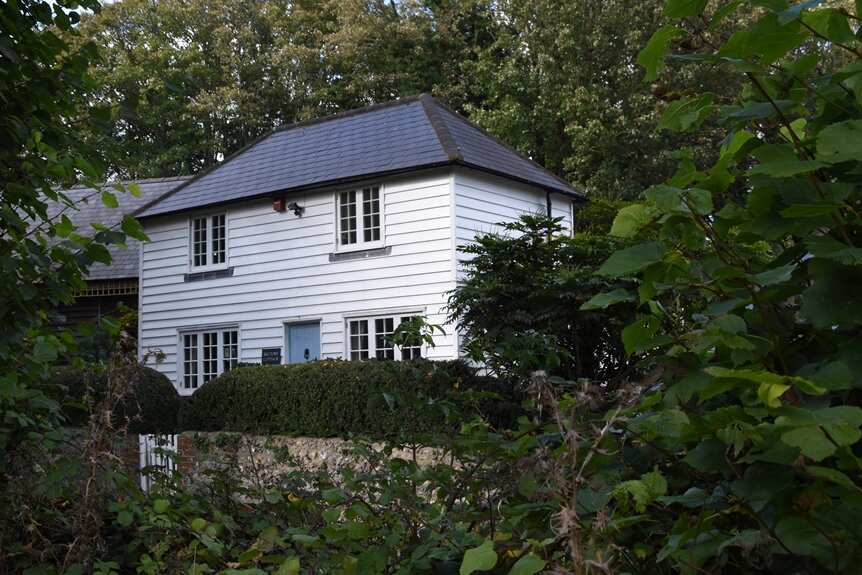
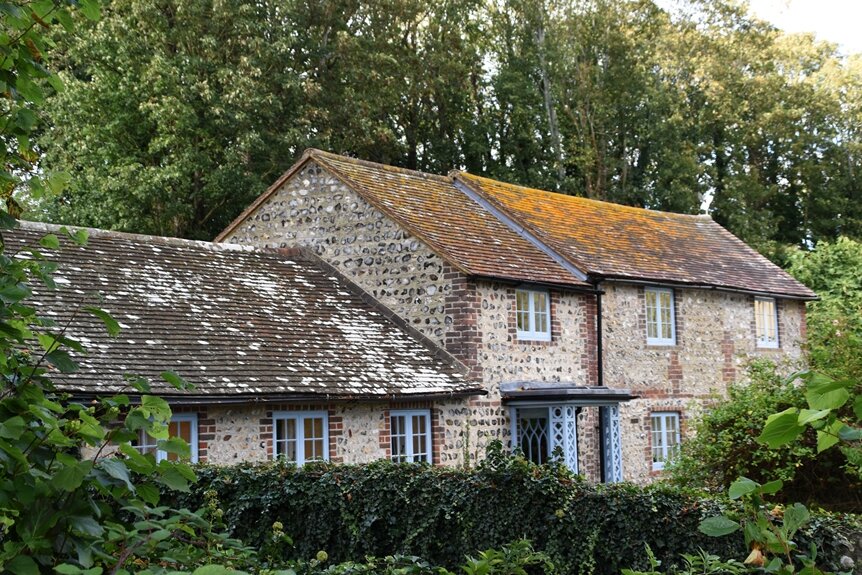
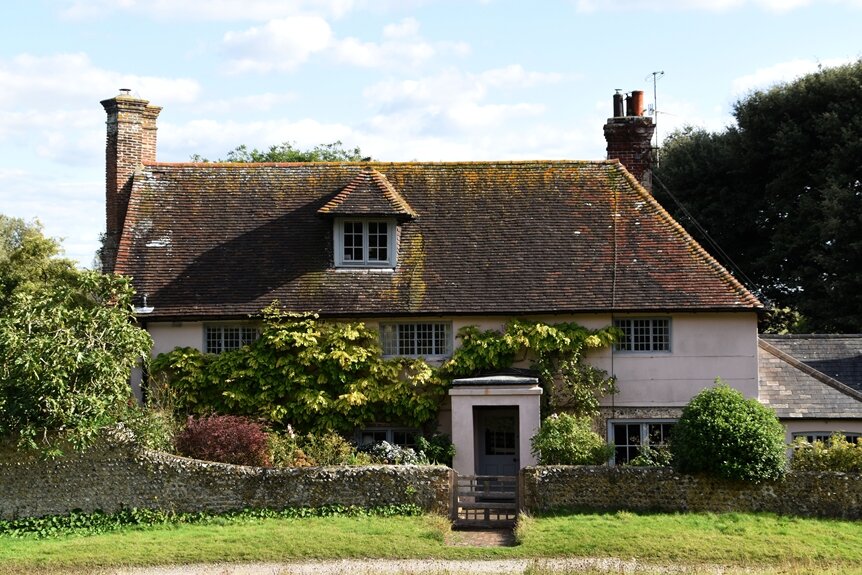
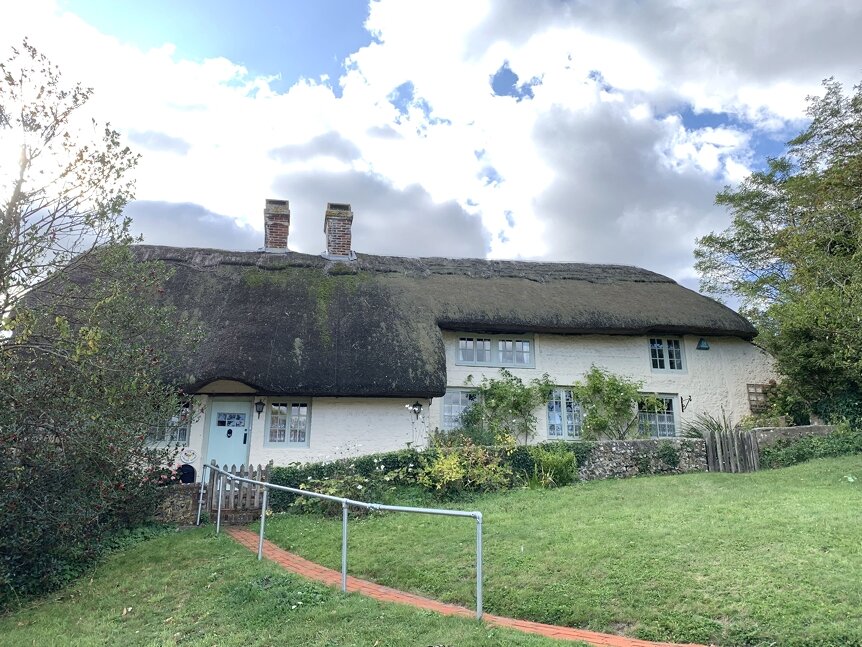
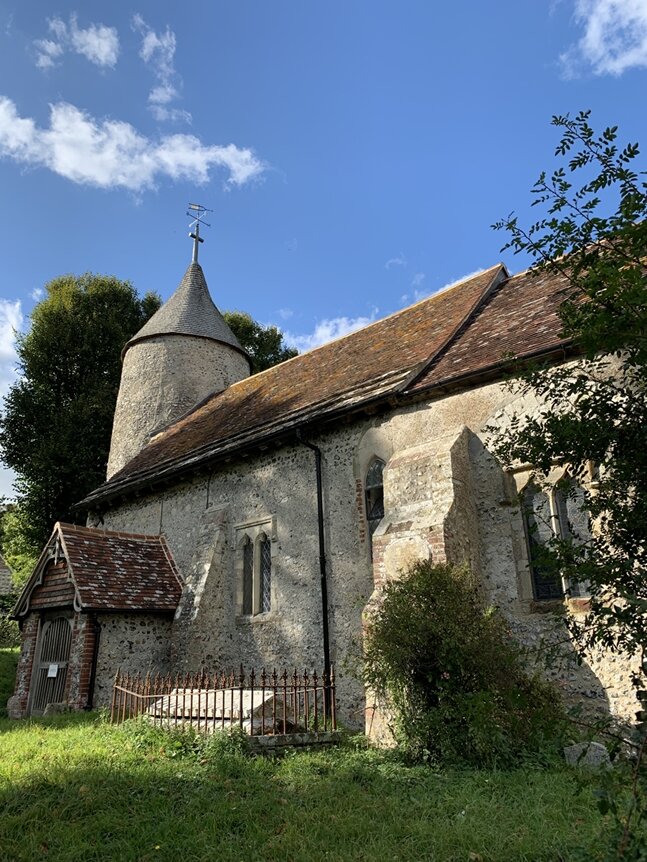
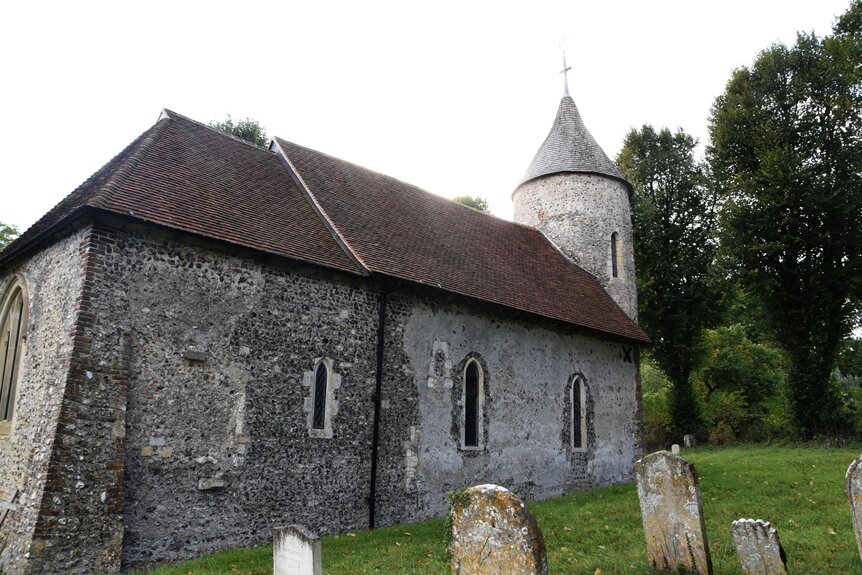
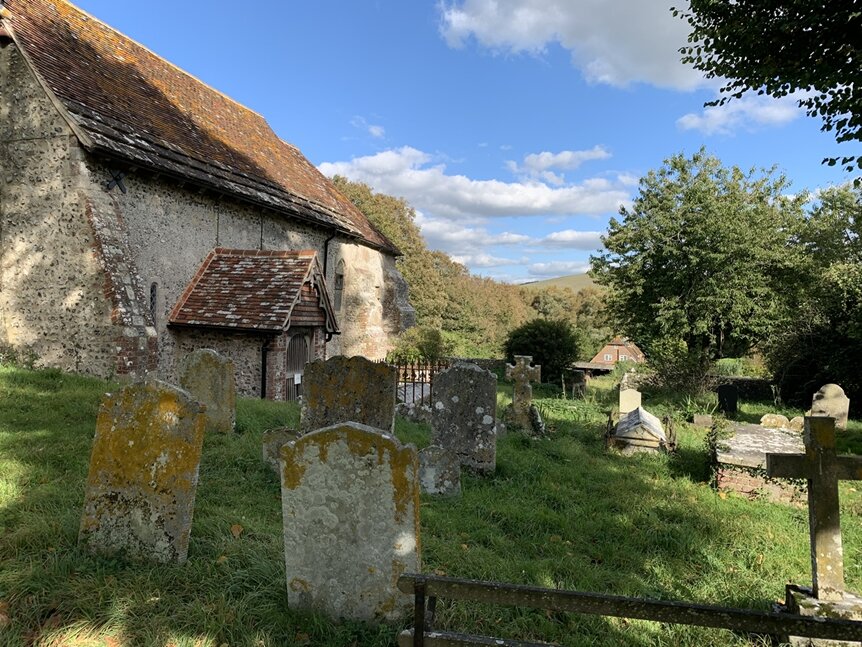
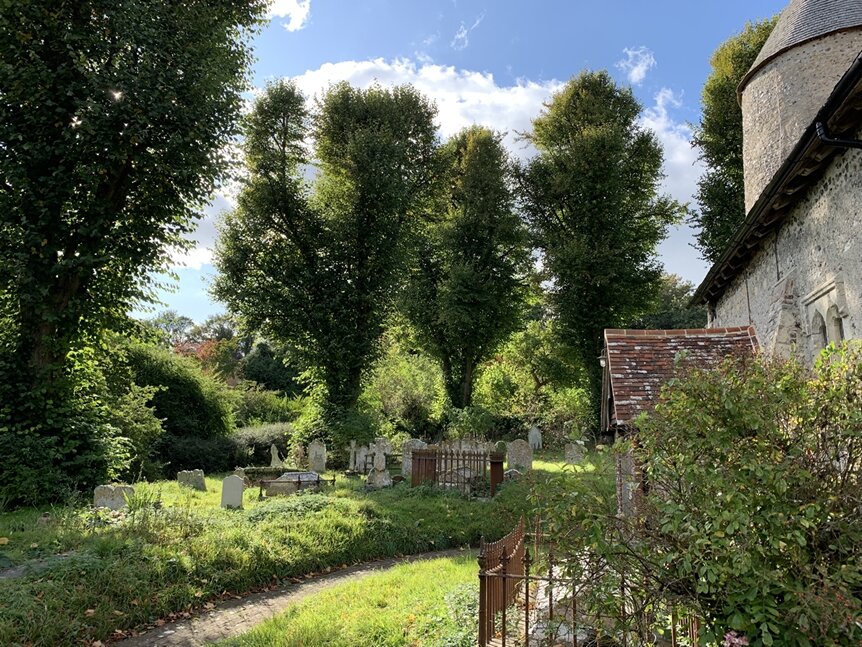

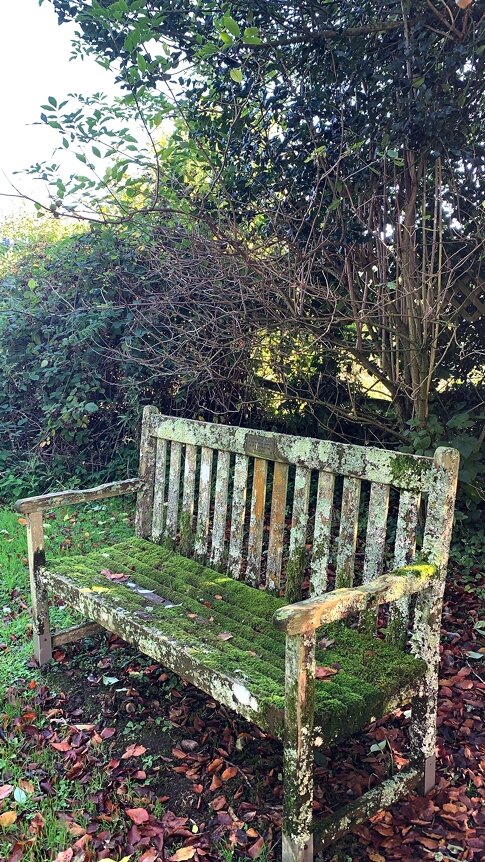
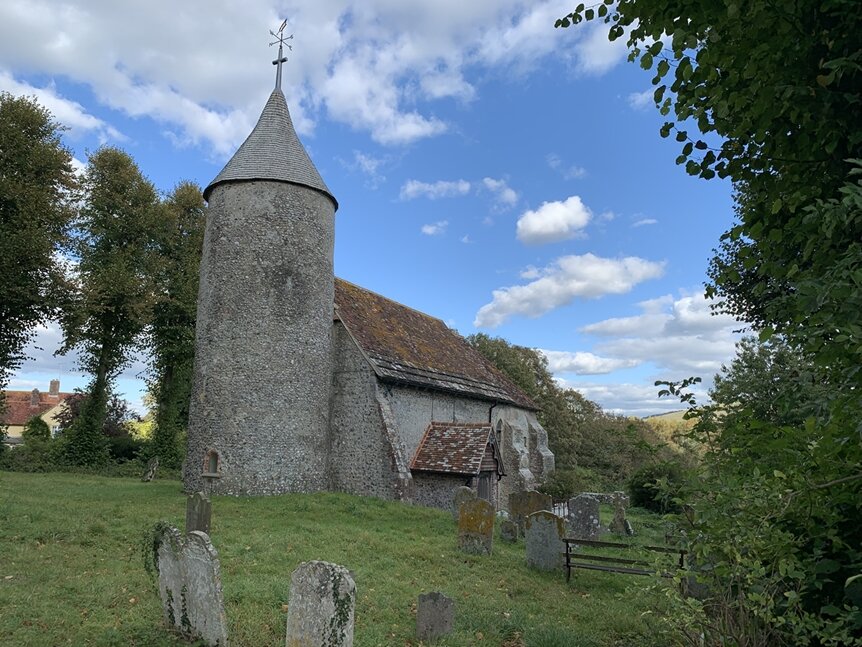
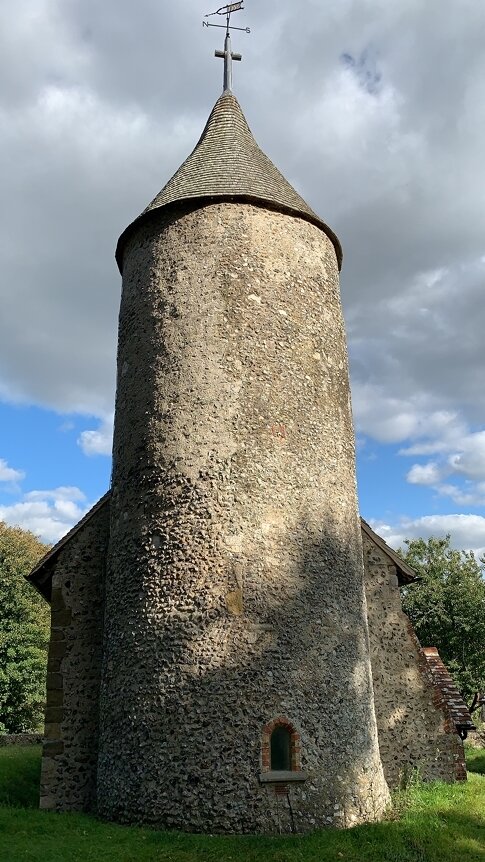
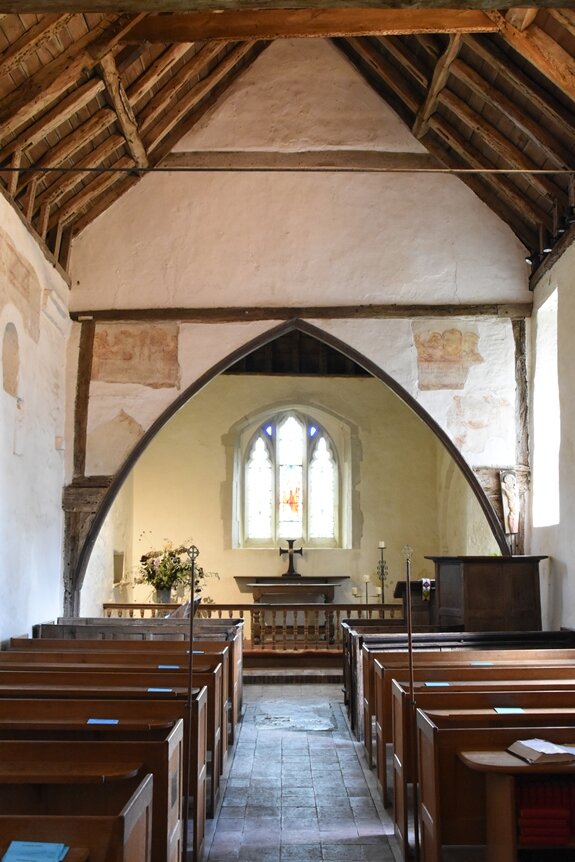


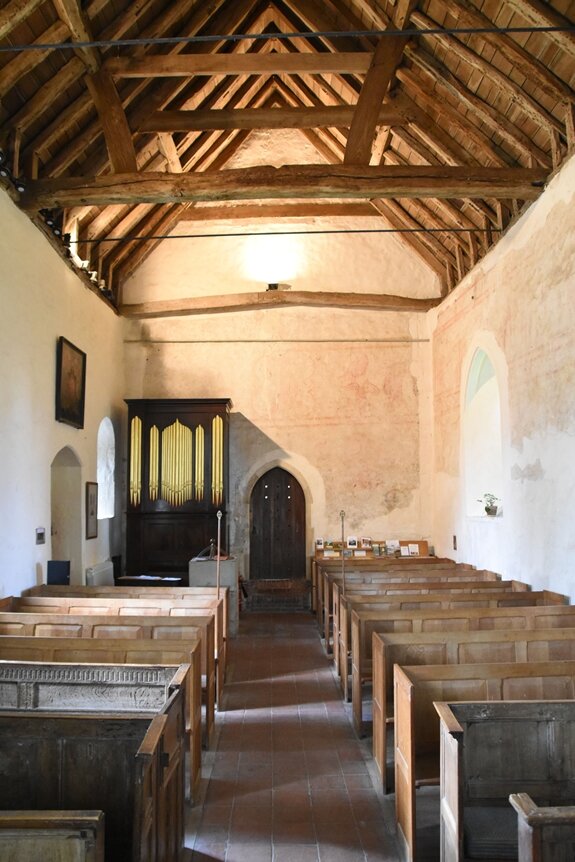
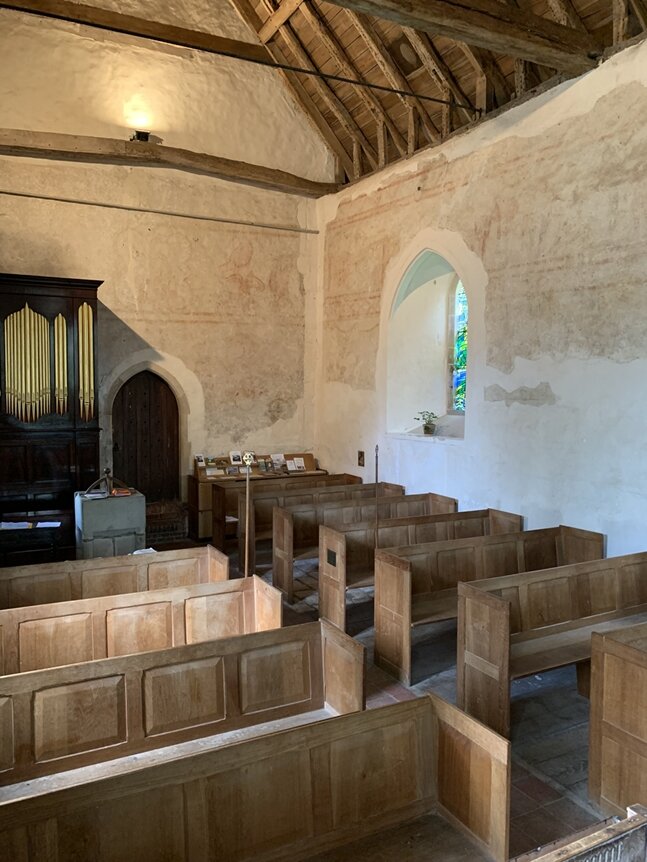

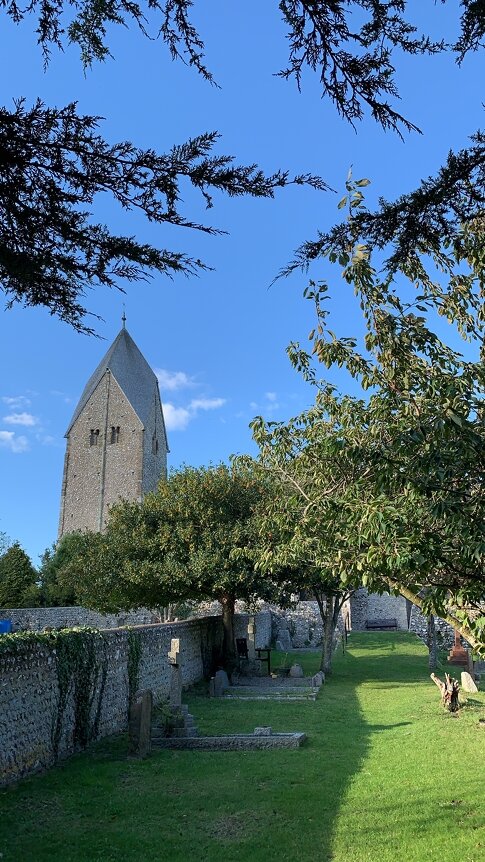
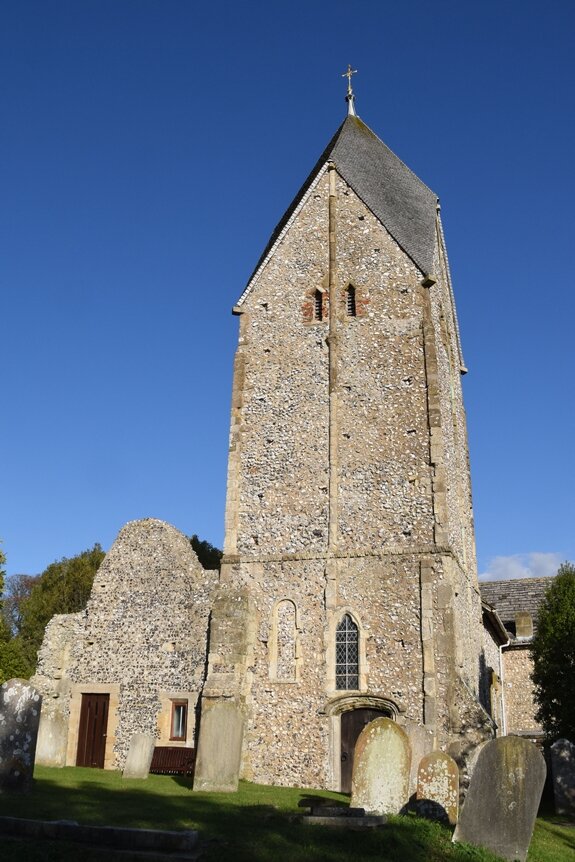

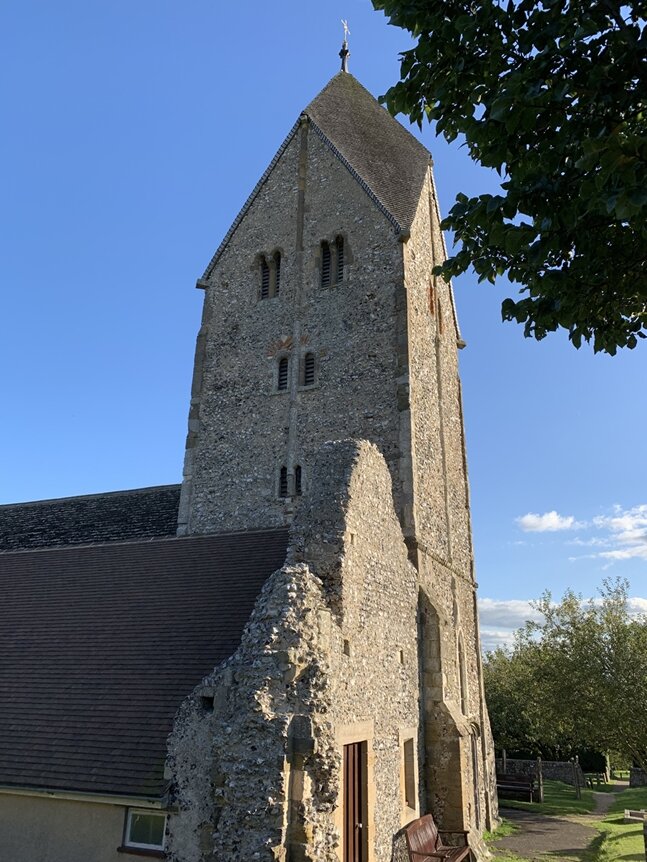
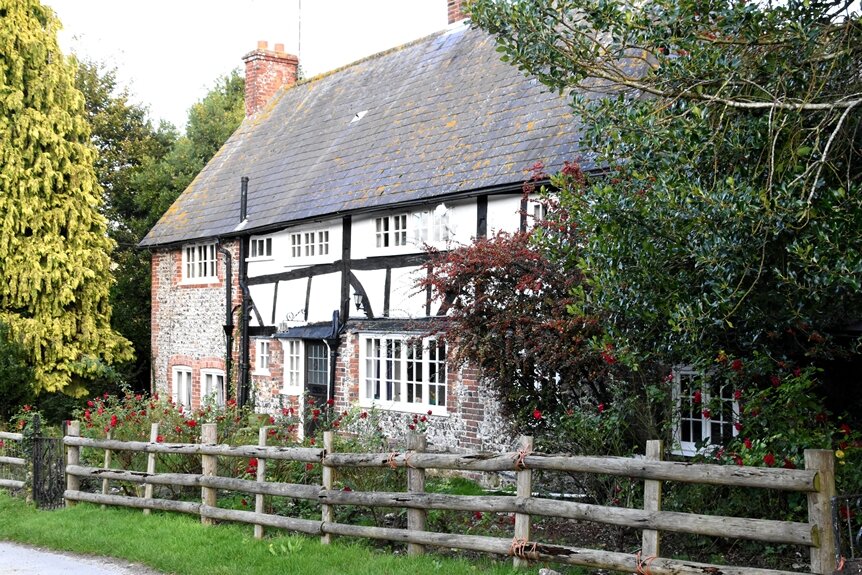
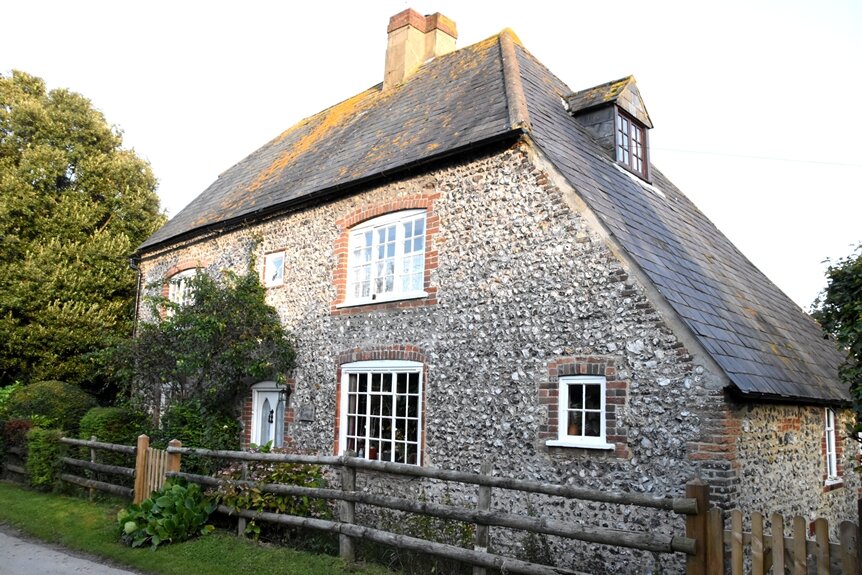
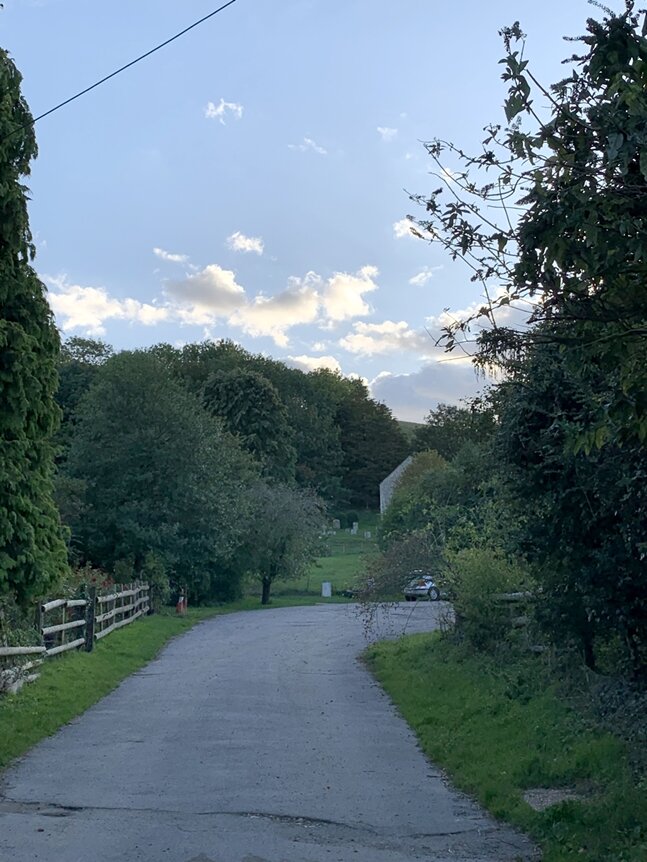

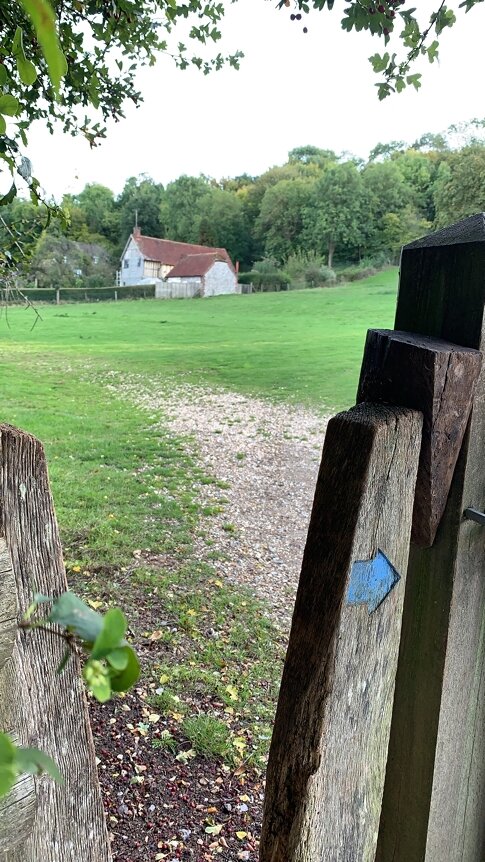

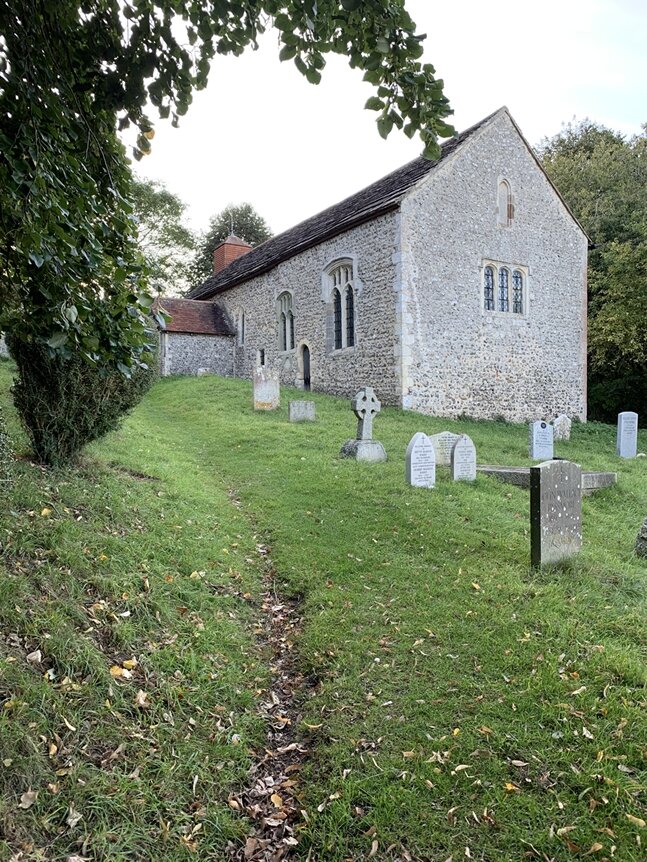


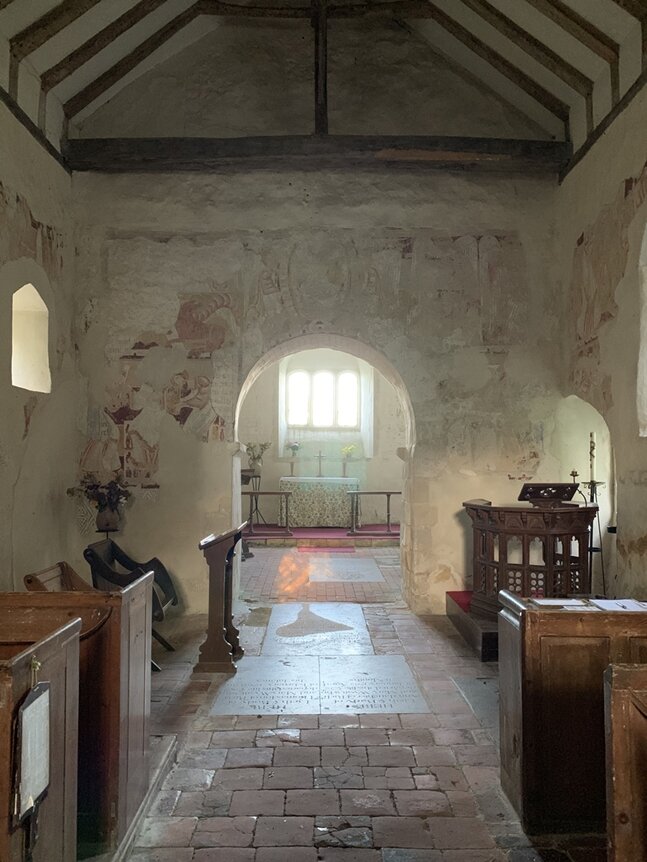

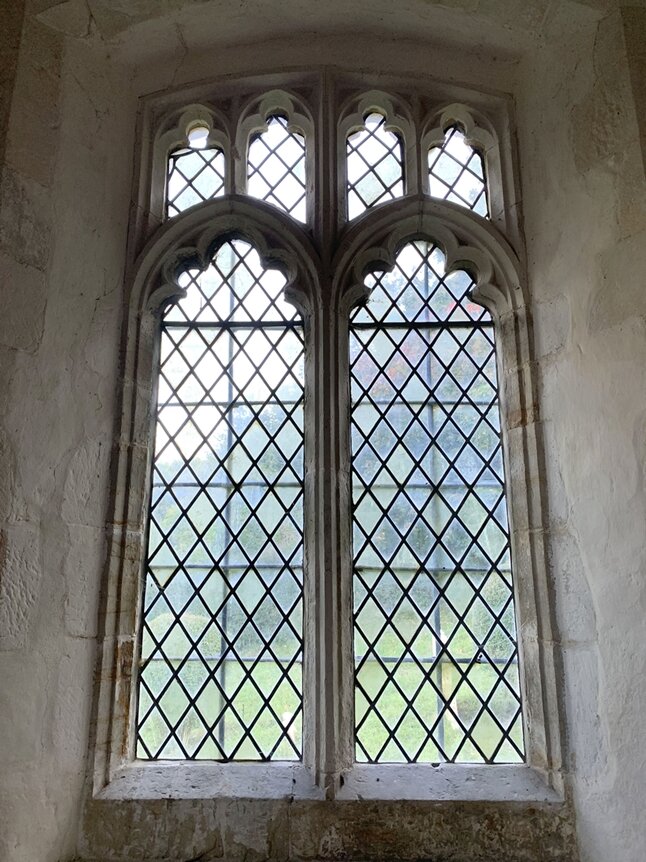
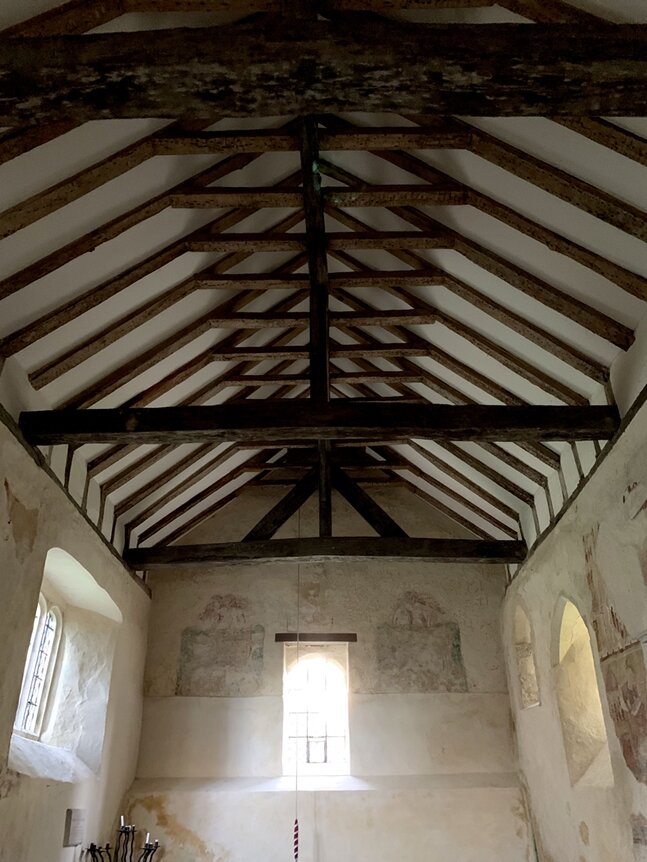
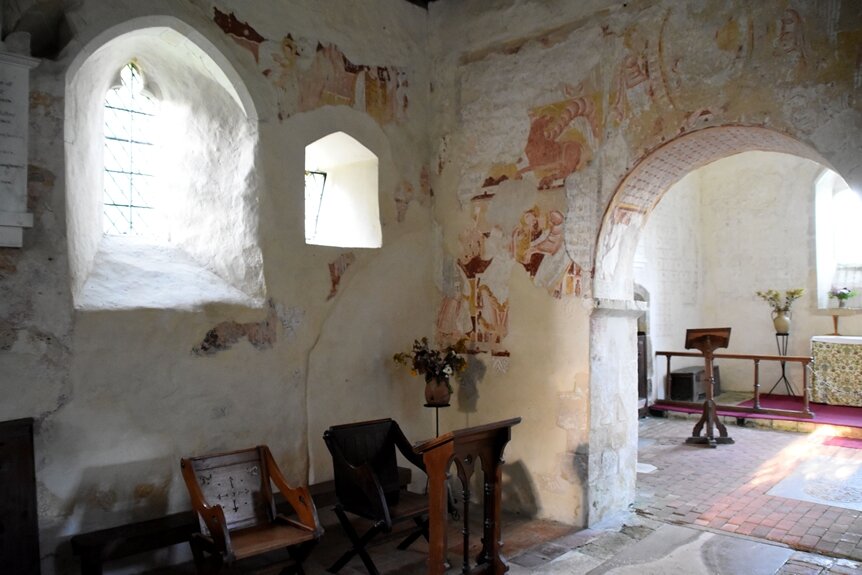
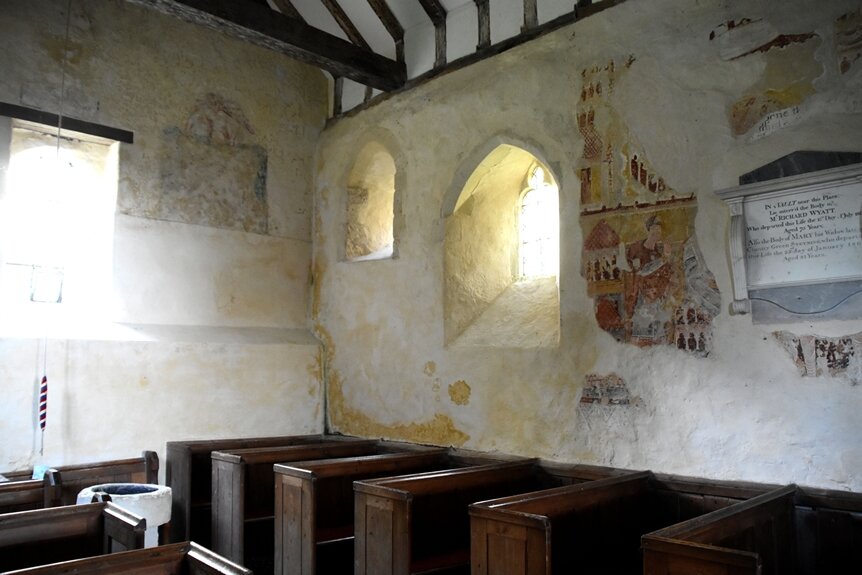
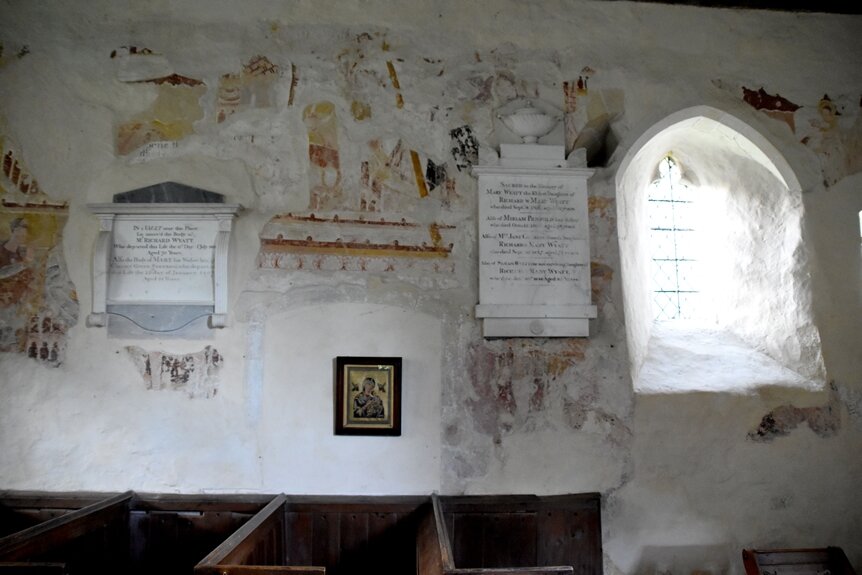
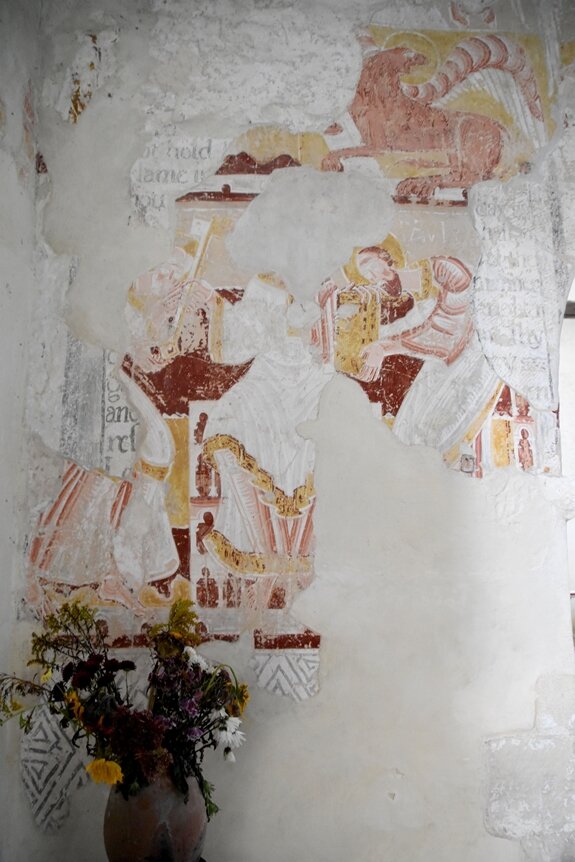
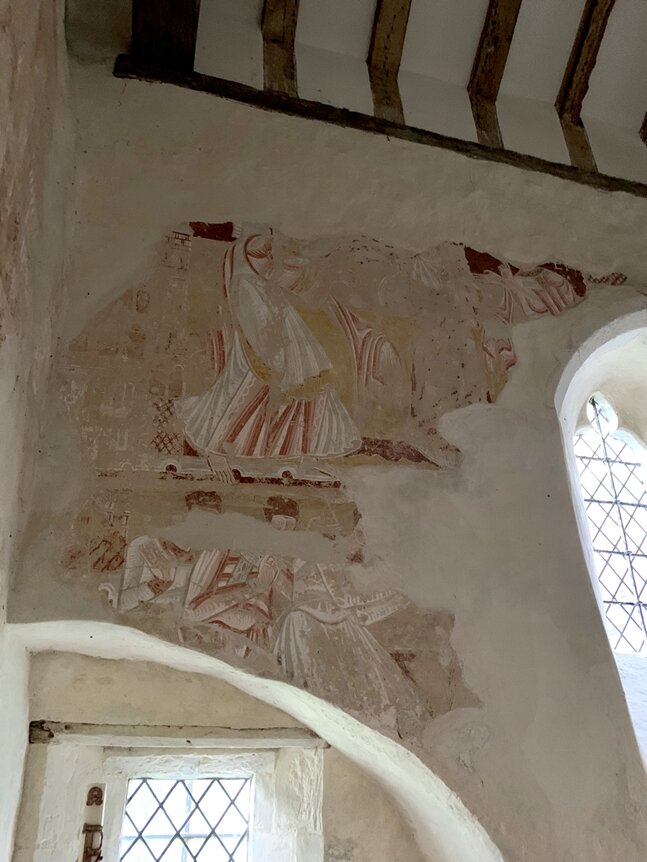
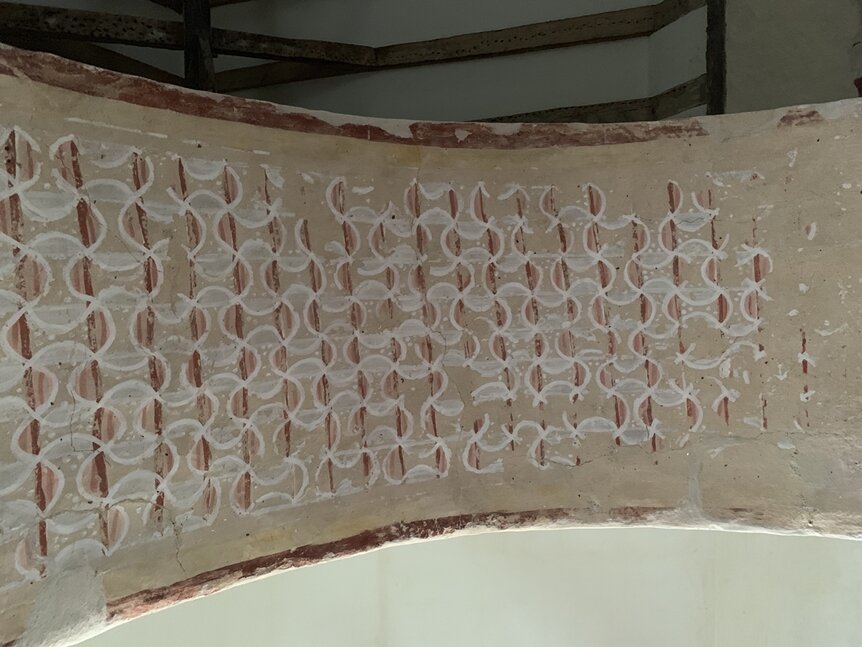
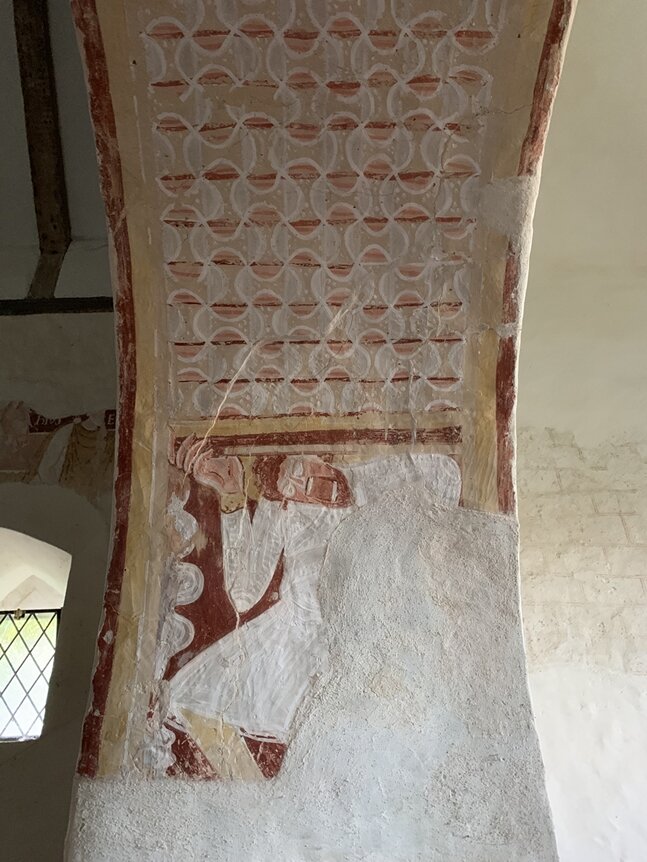
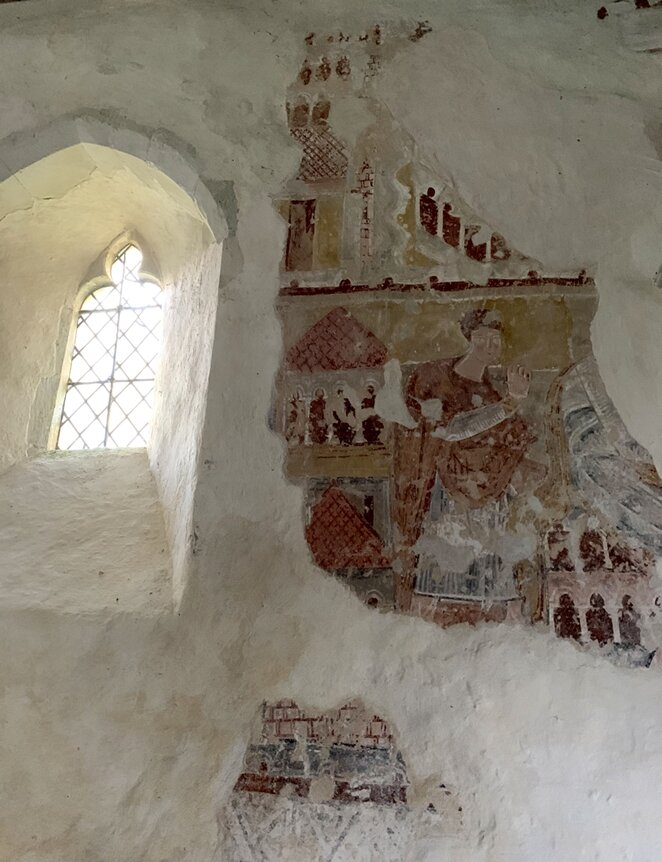
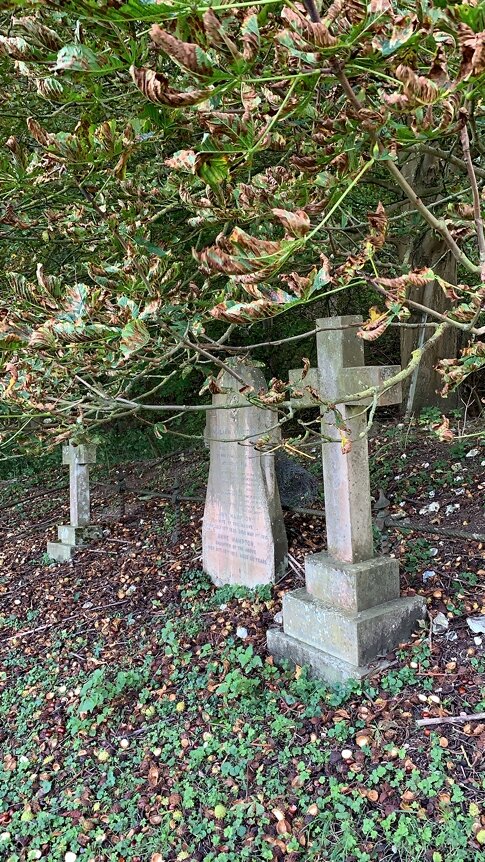
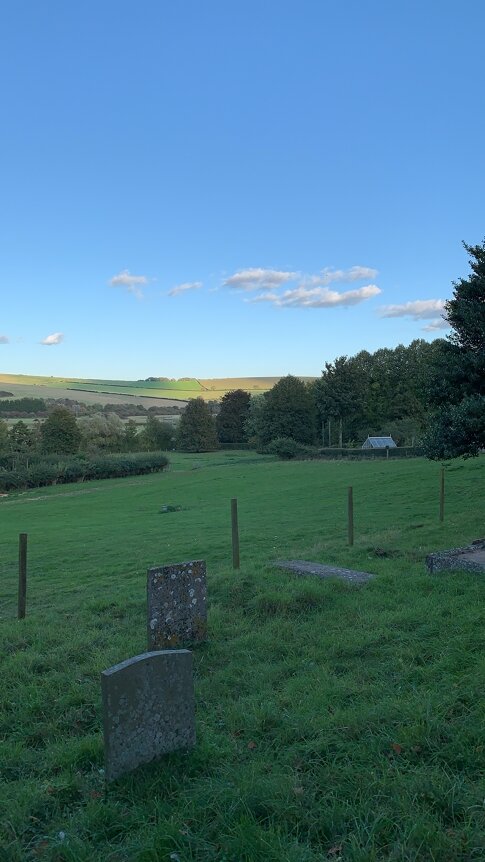
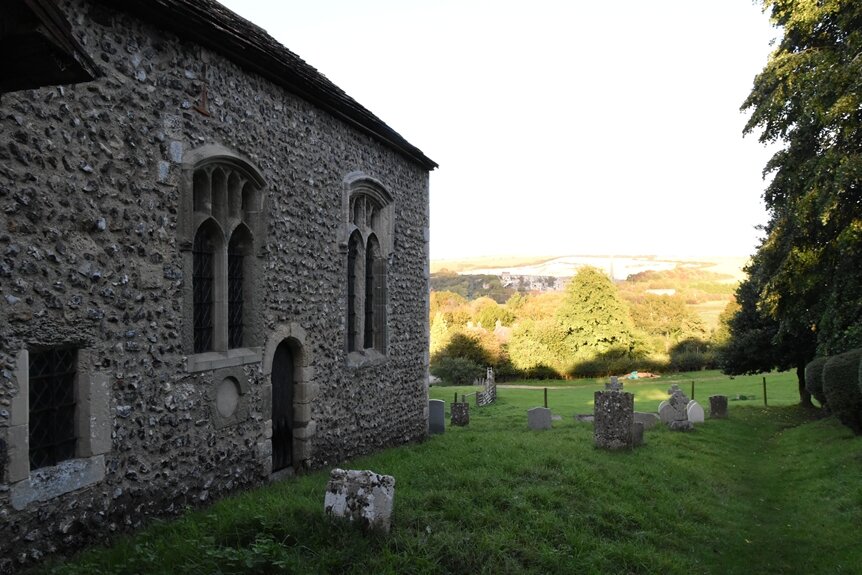
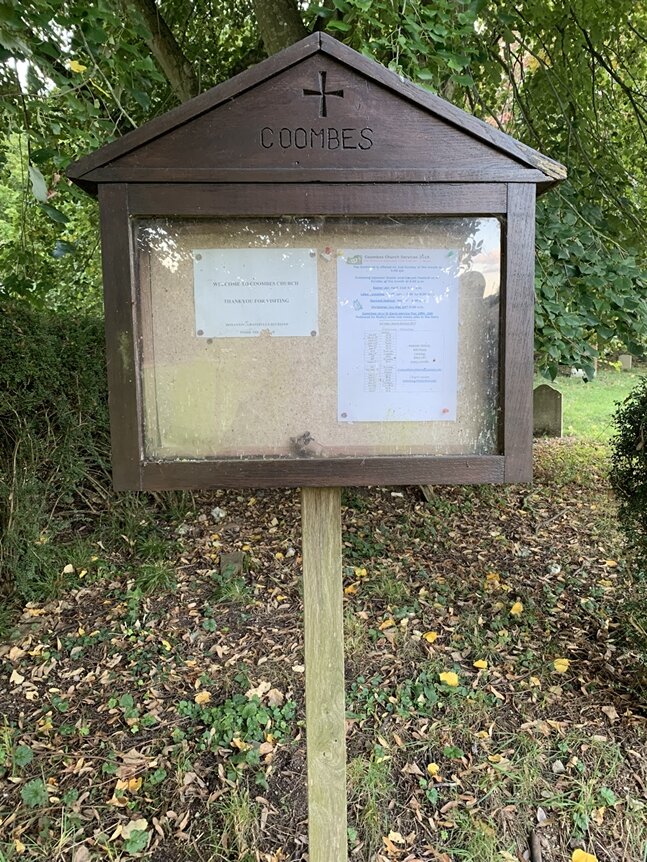
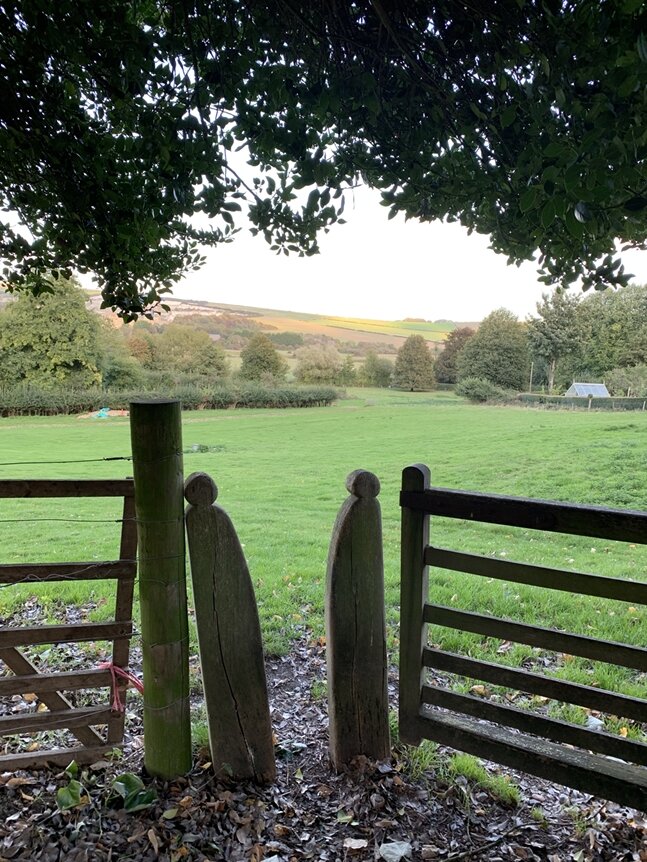
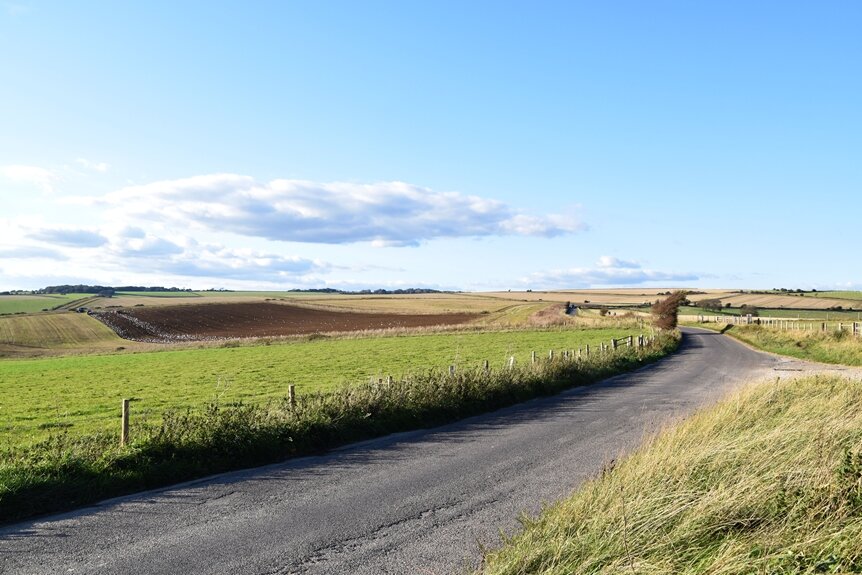
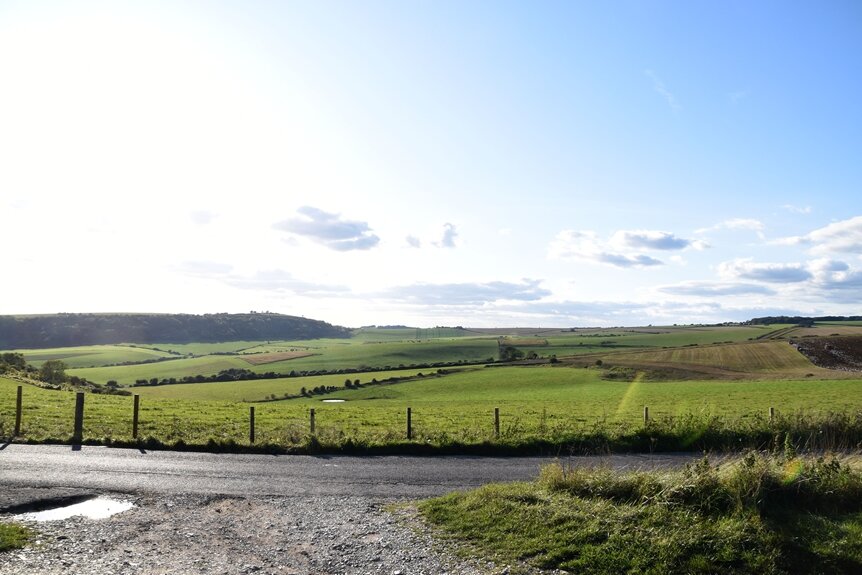
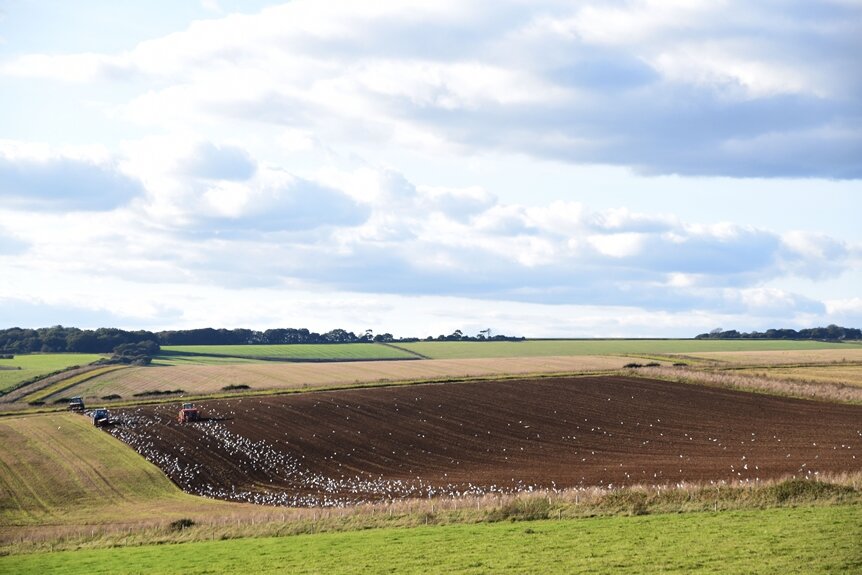

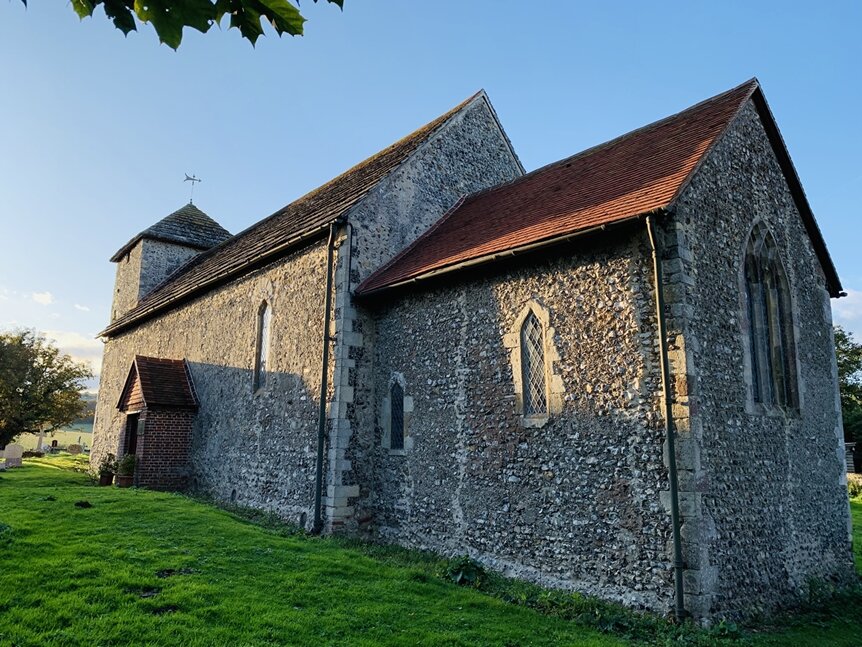
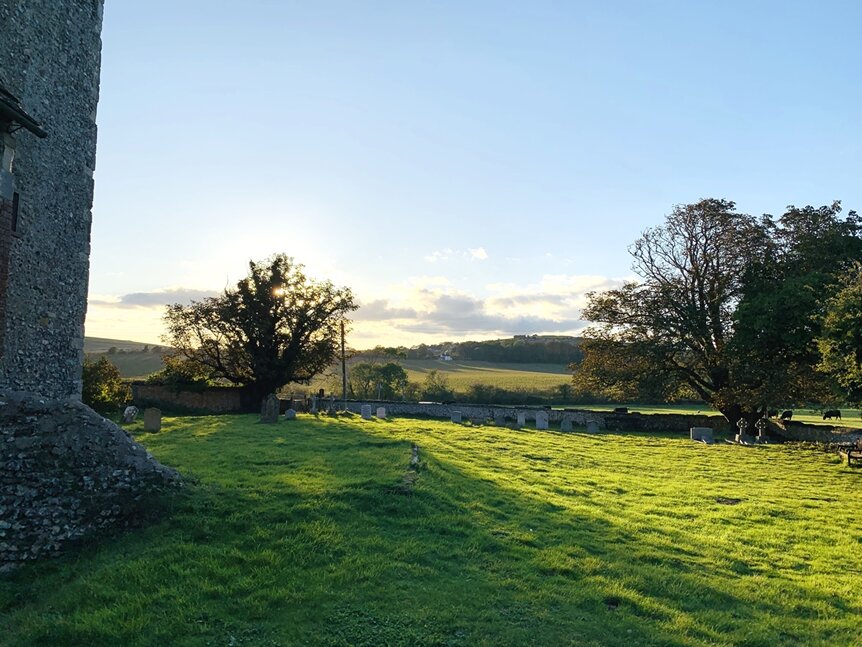
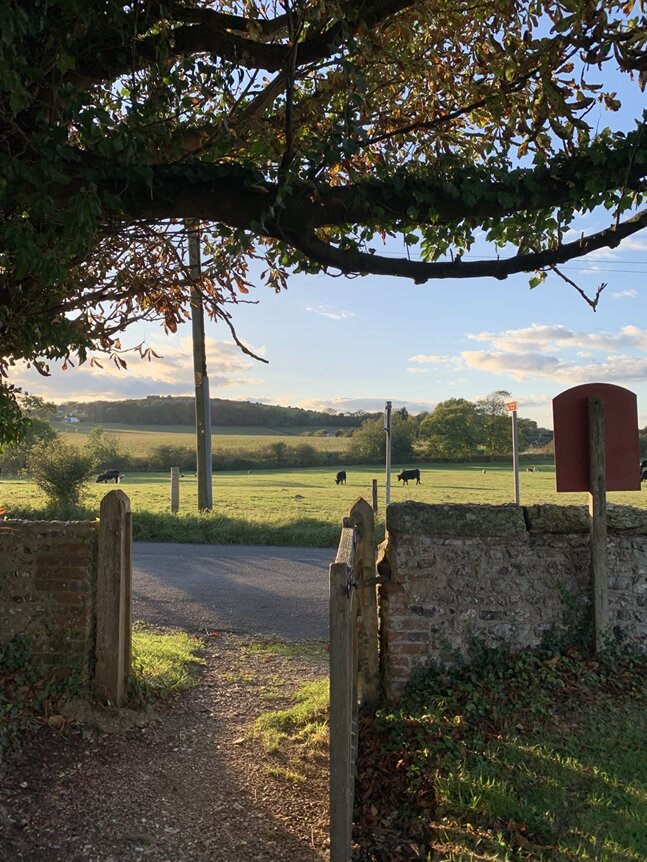








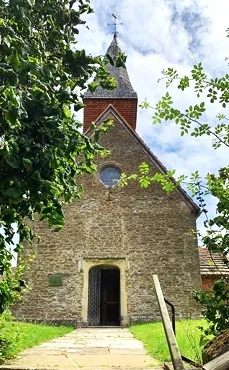
I am delighted to announce that in September 2019 I became a published photographer, that is, I had my first ever photographs published in a book, The Gardener’s Travel Companion to England, by well-known Australian author Janelle McCulloch which features a variety of beautiful English gardens.